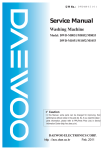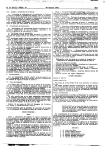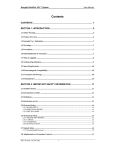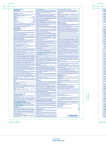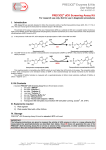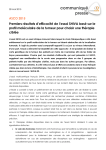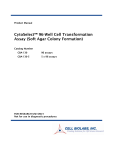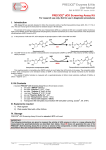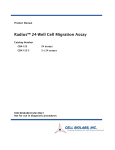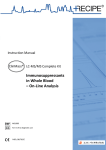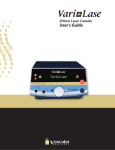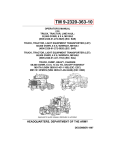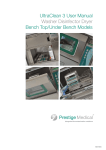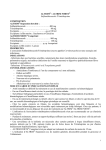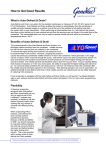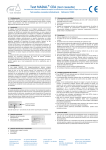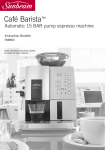Download HpB Cancer Regimens v.5.2 NWLCN 20 Oct 2011
Transcript
HEPATO PANCREATICO BILIARY (Including Neuroendocrine and GISTs) Section by: Dr Harpreet Wasan, Dr Rohini Sharma and Dr Alexandra Taylor Version: HPB Regimens v5.2 NWLCN 20Oct11 Section last updated: 19th September 2011 Section last corrected: 20th October 2011 Approved by GI Oncology Lead Clinician Dr H Wasan Approved by NWLCN HPB Tumour Group: Professor N Habib Review Date: September 2012 INDEX Date: Date: Page 3 Tumour Markers CHEMOTHERAPY ALONE 5-Fluorouracil Single Agent 1. Degramont 2. 3. CTIS CTIS CTIS CTIS Lokich/5FU-300 Contin Mayo 734/ CVAD 1219/NS 221 739/659 3 3 5 7 5-Fluorouracil-Cisplatin Combination 4. ECF 5. CF: Cisp60-5FU Contin 6. MdG-Cisp60 (Modified Degramont +Cisplatin) CTIS 270 CTIS 1221 CTIS 1751 10 13 15 Capecitabine-Combinations 7. ECX 8. CX – Cisplat-60/Cape1250 CTIS 1027 CTIS 1707 17 21 Gemcitabine Regimens 9. Gemcitabine 1g-Cisplatin 60 10. Gemcitabine 1g-Cisplatin 25 split dose (ABC02) 11. Gemcitabine 1+8+15 CTIS 563 CTIS 1734 CTIS 561 22 22 24 Targeted Therapies 12 Imatinib 13. Sorafenib 14. Sunitinib-50 (break/SPC) 15. Sunitinib-37.5-continuous 16. Everolimus CTIS CTIS CTIS CTIS CTIS 25 26 28 31 31 HpB Cancer Regimens Oct 2011-12.doc (Cancer Drugs Fund) (Cancer Drugs Fund) (Cancer Drugs Fund) (Cancer Drugs Fund) 1035 1735 1737 1736 1738 HPB page 1 of 58 Page Streptozocin Regimens 17. Streptozocin/5FU weekly 1228 1225 1222 1741 1739 1740 89 33 33 34 35 35 37 38 Anthracycline Regimens 23. Doxorubicin Systemic Dox-75 24. Epirubicin Systemic EPI-50 CTIS 1742 CTIS 1743 39 39 CHEMO-EMBOLISATION 25. Cisplatin chemo-embolisation 26. Doxorubicin chemo-embolisation CTIS 1744 CTIS 1266 40 41 ADDITIONAL PRIVATE CARE REGIMENS (Subject to local approval) 27. EOX 28. Radio-Embolisation SIR-Spheres/Modified OxMdG 29. Radio-Embolisation SIR Spheres/Modified IriMdG CTIS 1704 CTIS 1746 CTIS 1745 42 46 51 CHEMO-RADIATION REGIMENS 30. 5FU320-FA20 5days 31. Gemcitabine-300+RT 32. Capecitabine 1650 + RT CTIS 204 CTIS 1260 CTIS 1028 55 55 56 18. 19. 20. 21. 22. Loading Maintenance CTIS CTIS CTIS CTIS CTIS CTIS CTIS Streptozocin 5FU 5day Streptozocin-5FU 3day Streptozocin/Modified Degramont Streptozocin/5FU/Cisplatin Streptozocin/Doxorubicin HpB Cancer Regimens Oct 2011-12.doc HPB page 2 of 58 HEPATO PANCREATICO BILIARY (Including Neuroendocrine and GISTs) Section by: Dr Harpreet Wasan, Dr Rohini Sharma and Dr Alexandra Taylor Version: HPB Regimens v5.2 NWLCN 20Oct11 Section last corrected: 20th October 2011 Section last updated: 19th September 2011 Approved by GI Oncology Lead Clinician September 2011 Approved by WLCN HPB Tumour Group: September 2011 Review Date: September 2012 Tumour Markers Diagnosis Cholangiocarcinoma Duodenal cancer Gall Bladder Pancreas Hepatocellular Neuro endocrine Tumour Markers CA19-9, CEA (CA125) CA19-9, CEA CA19-9, CEA CA19-9, CEA (CA125) Alpha fetoprotein (αFP) 5HIAA, Fasting GI peptide screen CGa, NSE, alpha fetoprotein (αFP) If tumour markers not elevated at baseline not necessary to repeat with every cycle. Chemotherapy Alone (No radiotherapy) 5-Fluorouracil Single Agent Regimens +/- Folinic Acid Folinic acid refers to the mixed race mix D and L isomers Calcium levofolinate refers to L-folinic acid isomer only. 1. DeGramont – Modified (MdG via CVAD CTIS: 734, via NS CTIS: 1219) Folinic Acid 350mg IV over 2 hours Day 1 5 Fluorouracil 400mg/m2 IV bolus Day 1 2 5 Fluorouracil 2800mg/m IV over 46 hours Days 1 to 2 Interval between cycles: Repeat every 14 days Number of cycles: HPB: 6-12 cycles/3-6 months Tests before starting course of chemo: FBC, U&Es, LFTs. INR if hepatocellular cancer diagnosis. Tumour markers in table on page 3. Tests to OK/Confirm each cycle of chemo: FBC, U&Es, LFTs. INR if hepatocellular cancer diagnosis Supportive drugs with each cycle: Low risk antiemetics as per NWLCN guidelines or as per local policy Chlorhexidine mouthwash 10mls QDS. Loperamide if required 2-4mg QDS prn. (Max 16mg/24hours). Patient information: Chemotherapy treatment booklet (local information/Macmillan) Your chemotherapy record (NWLCN red book) Chemotherapy alert card (NWLCN) Macmillan drug specific information sheets and information prescriptions as appropriate HpB Cancer Regimens Oct 2011-12.doc HPB page 3 of 58 Neutropenia DVD (NWLCN) Additional information: DeGramont Regimens May 2005: all DeGramont regimens for upper GI standardised to the “modified” version either via a CVAD/infusor or via peripheral line/litre infusion bags. Administration notes: If 5FU administered using an ambulatory infusion pump via a central venous access device (CVAD) refer to relevant protocol for care of CVAD. Joint care with the community nursing services should be arranged in advance to support the patient and to assist with disconnecting the chemotherapy and flushing the CVAD. Written community nursing referral should be completed and the patient should be discharged with a home spillage kit, sharps container and a small supply of equipment to flush the line and dress the entry site of the CVAD. Dose modifications: See DeGramont-modified table below References: DeGramont et al. J. Clin Oncol 1997 15:808-15 Annals Oncol 1998;9(4):47 Seymour MT et al Table: DeGramont – Modified NB. Palliative patients will require greater dose reductions than stated below based on individual patient parameters. Discuss with consultant. Side-Effect: MdG Haematology (CR08) Neutrophils x109/L 1.5 and <1.5 or Dose Modification (Source: Focus (CR08) Trial/2000) Platelets x109/L 100 <100 Renal function GFR below 30ml/min Hepatic function Stomatitis (Focus) Diarrhoea (Focus) HpB Cancer Regimens Oct 2011-12.doc Full dose. Delay until recovery. Only treat when neutrophils and platelets are above these limits If more than 1 delay, or one delay of 2 weeks occurs then restart with: 5FU: 20% dose reduction (bolus and infusion). Continue with this reduced dose unless further toxicity occurs. If further delays for myelotoxicity occur despite the 20% dose reduction, discuss with consultant Unclear guidance. Discuss with consultant Unclear guidance. Discuss with consultant If mouth ulcers occur despite routine chlorhexidine mouthwash: 5FU: 20% dose reduction (bolus and infusion). Continue with this reduced dose unless further toxicity occurs. Between cycles – treat symptomatically loperamide 2-4mg QDS PRN and/or codeine phosphate 30-60mg QDS PRN Not resolved by next cycle: Delay 1 week/until recovered If diarrhoea still a problem Despite symptomatic treatment Or more than one delay is required Then dose reduce 5FU: 20% dose reduction (bolus and infusion). Continue with this reduced dose unless further toxicity occurs. HPB page 4 of 58 Side-Effect: MdG Dose Modification (Source: Focus (CR08) Trial/2000) Hand-Foot Syndrome (Focus/Focus 2) ≥Grade 2 Stop 5FU until recovered then restart with 5FU 20% dose reduction (bolus and infusion) for subsequent cycles. Phase III randomised controlled trials show no benefit from pyridoxine for prevention or treatment of 5FU induced hand/foot syndrome. Pyridoxine is not recommended DPD Deficiency (Focus) Cardiotoxicity (Focus) Neurotoxicity (Focus) 2. 1-3% of patients have markedly exaggerated 5FU toxicity due to reduced 5FU catabolism. Discuss with consultant. Uncommon. 5FU may provoke angina or MI in patients with ischaemic heart disease. Seek specialist opinion on upgraded anti-anginal medication and consider dose reduction or alternative non 5FU treatment. Uncommon – Cerebellar Consider alternative non 5FU treatment Lokich/5FU-300 Contin (CTIS: 221) 5-Fluorouracil 300mg/m2/day IV continuous infusion for 12 weeks Continuous infusion for 12 weeks , 1 cycle = 3 weeks. Repeat tests every 21 days Interval between cycles: Continuous infusion for 12 to 24 weeks (4 to 8 cycles of 21 days) Number of cycles: HPB: 12-24 weeks Tests before starting course of chemo: FBC, U&Es, LFTs. Tumour markers in table on page 3. Tests to OK/Confirm each cycle of chemo: FBC, U&Es, LFTs Supportive drugs with each cycle: Low risk antiemetics as per NWLCN guidelines or as per local policy Chlorhexidine mouthwash 10mls QDS Loperamide 2mg QDS PRN (max 16mg/24hours) Patient information: Chemotherapy treatment booklet (local information/Macmillan) Your chemotherapy record (NWLCN red book) Chemotherapy alert card (NWLCN) Macmillan drug specific information sheets and information prescriptions as appropriate Neutropenia DVD (NWLCN) Additional Information: Administration notes: See page 4 Dose modifications: Table: Lokich page 6 References: Lokich et al. J.Clin Oncol 1989 7:425-32 J. Clin Oncol 2001. Webb et al (ECF) HpB Cancer Regimens Oct 2011-12.doc HPB page 5 of 58 Table: Lokich NB. Palliative patients will require greater dose reductions than stated below based on individual patient parameters. Discuss with consultant. Side-effect: Lokich Haematology WBC <2.0x109/L OR Platelets <75x 109/L Dose Modification (Source: CR06 Trial) Renal function GFR below 30ml/min Unclear guidance. Discuss with consultant Hepatic function Unclear guidance. Discuss with consultant Stomatitis (CR06) Routine mouthcare with chlorhexidine. If still a problem: stop chemo until recovery then Restart with 5FU: Reduce by 50mg/m2/day Give loperamide 2-4mg QDS or codeine phosphate 30-60mg QDS If still a problem: stop chemo until recovery then: Restart with 5FU: Reduce by 50mg/m2/day Diarrhoea (CR06) Interrupt infusion for 1 week (or until recovery Resume with 5FU: reduce dose by 50mg/m2/ day Hand/Foot Syndrome ≥Grade 2 Stop chemo until recovered then restart with: 5FU dose reduced by 50mg/m2/day. Phase III randomised controlled trials show no benefit from pyridoxine for prevention or treatment of 5FU induced hand/foot syndrome. Pyridoxine is not recommended DPD Deficiency Cardiotoxicity Neurotoxicity HpB Cancer Regimens Oct 2011-12.doc 1-3% of patients have markedly exaggerated 5FU toxicity due to reduced 5FU catabolism. Discuss with consultant. Uncommon. 5FU may provoke angina or MI in patients with ischaemic heart disease. Seek specialist opinion on upgraded anti-anginal medication and consider dose reduction or alternative non 5FU treatment. Uncommon – Cerebellar Consider alternative non 5FU treatment HPB page 6 of 58 3. MAYO Adaptations: 5FU425/FA20 5 day (CTIS: 739) or 5FU 370/FA20 5day (CTIS: 659) Folinic Acid 20mg/m2 IV bolus 5 Fluorouracil dose determined by age see below Dose under 70 years And ECOG 1 425mg/m2 IV bolus Dose over 70 years and/or ECOG 2 370mg/m2 IV bolus Days 1 to 5 Days 1 to 5 Days 1 to 5 Interval between cycles: Repeat every 28 days Number of cycles: HPB: 6 cycles/6 months Tests before starting course of chemo: FBC, U&Es, LFTs, tumour markers indicated in table on page 3. INR if hepatocellular cancer Tests to OK/Confirm each cycle of chemo: FBC, U&Es, LFTs. INR if hepatocellular cancer Supportive drugs with each cycle: Low risk antiemetics as per NWLCN guidelines or as per local policy Chlorhexidine mouthwash 10mls QDS Loperamide 2-4mg QDS PRN (max 16mg/day) Ice chips 5 minutes before and for 30 minutes after injection (if tolerated) to reduce mucositis (Focus) Patient information: Chemotherapy treatment booklet (local information/Macmillan) Your chemotherapy record (NWLCN red book) Chemotherapy alert card (NWLCN) Macmillan drug specific information sheets and information prescriptions as appropriate Neutropenia DVD (NWLCN) Additional information: Administration notes: Suck ice cubes or ice lollies 5 minutes before and for 30 minutes after injection (if tolerated) of 5FU may reduce the incidence of stomatitis. Dose Modifications: See MAYO table page 8 Reference: J. Clin Oncol 1997 15:246-250. O’Connell et al HpB Cancer Regimens Oct 2011-12.doc HPB page 7 of 58 Table: MAYO (Ref. QUASAR protocol UKCCCR 1998) Radical treatment only: For combination of Haematological/non Haematological toxicity Wait until FULL recovery ie. neutrophils 1.5 x109/L and platelets 100 x109/L and/or any persistent mucositis and diarrhoea have resolved If within 2 weeks restart chemo using dose modifications below If FULL recovery takes more than 2 weeks discuss with consultant Haematological Toxicity Neutrophils x109/L ≥ 1.5 And Non Haematological Toxicity On day of chemo or during previous cycle (Diarrhoea or mucositis) Platelets x109/L 0-1 ≥100 Full dose 50-99 Delay until haematological Discuss with consultant as in recovery then some cases may go ahead with give full dose neutrophils 1.0 to 1.5 provided ≥1.0-1.5* And/or platelets ≥100 0.5-0.99 <0.5 Or Or CTC Grade 2 Full dose Delay until haematological recovery then give 20% dose reduction 25-49 Delay until full haematological recovery then give 20% dose reduction Delay until haematological recovery then give 30% dose reduction <25 Delay until haematological recovery then give 50% dose reduction Delay until haematological recovery then give 50% dose reduction 3 Delay until recovery to toxicity ≤grade 2 then give 50% dose reduction Delay until full haematological and nonhaematological recovery to toxicity grade ≤2 then give 50% dose reduction Delay until full haematological and nonhaematological recovery to toxicity ≤ grade 2 then give 50% dose reduction Delay until full haematological and non-haematological recovery to toxicity ≤ grade 2 then give 50% dose reduction Do not dose reduce Folinic Acid HpB Cancer Regimens Oct 2011-12.doc HPB page 8 of 58 4 Do not give Do not give Do not give Do not give Side-Effect: MAYO Haematology Dose Modification See table above Renal function Unclear guidance. Discuss with consultant GFR below 30ml/min (Source:Quasar/FOCUS trials) Hepatic function Unclear guidance. Discuss with consultant Stomatitis Routine mouthcare with chlorhexidine. Ensure ice chips are being used. If still a problem reduce dose according to table page 8 Give loperamide 2-4mg oral QDS PRN (max 16mg/24hours) or codeine phosphate 30-60mg oral QDS PRN. If still a problem reduce dose according to table page 8 Reduce dose according to table page 8 Diarrhoea Hand and Foot Syndrome Phase III randomised controlled trials show no benefit from pyridoxine for prevention or treatment of 5FU induced hand/foot syndrome. Pyridoxine is not recommended DPD Deficiency (Focus) Cardiotoxicity (FOCUS) Neurotoxicity (Focus) HpB Cancer Regimens Oct 2011-12.doc 1-3% of patients have markedly exaggerated 5FU toxicity due to reduced 5FU catabolism. Discuss with consultant. Uncommon. 5FU may provoke angina or MI in patients with ischaemic heart disease. Seek specialist opinion on upgraded anti-anginal medication and consider dose reduction or alternative non 5FU treatment. Uncommon – Cerebellar Consider alternative non 5FU treatment HPB page 9 of 58 5-Fluorouracil - Cisplatin Combination Chemotherapy 4. ECF via CVAD (CTIS: 270) Epirubicin 50mg/m2 Prehydrations Cisplatin 60mg/m2 Post hydrations 5-Fluorouracil 200mg/m2/ day IV bolus IV over 2 hours IV continuous infusion starting 4 hours before cisplatin on first cycle Day 1 Day 1 Day 1 Day 1 Days 1 to 21 Interval between cycles: Repeat every 21 days Number of cycles: HPB Metastatic/palliative: 4-8 cycles Tests before starting course of chemo: FBC, U&Es, Mg, LFTs, Crcl (calculated). Do EDTA if <60mls/min, tumour markers in table on Page 3. Cardiac assessment: patients with a history of ischaemic heart disease and abnormal ECG should have pre-treatment evaluation of cardiac function with MUGA scan or equivalent. If left ventricular ejection fraction is less than 50% prior to treatment then omit epirubicin (MAGIC). Tests to OK/Confirm each cycle of chemo: FBC, U&Es, Mg, LFTs. Crcl (calculated). Do EDTA if rising serum creatinine, Supportive drugs with each cycle: Very high risk antiemetics as per NWLCN guidelines or as per local policy Chlorhexidine mouthwash 10mls QDS. Loperamide 2-4mg QDS orally PRN (max 16mg/24hours) Patient information: Chemotherapy treatment booklet (local information/Macmillan) Your chemotherapy record (NWLCN red book) Chemotherapy alert card (NWLCN) Macmillan drug specific information sheets and information prescriptions as appropriate Neutropenia DVD (NWLCN) Additional information: Administration notes: Epirubicin: Vesicant, administer according to WLCN protocol Cisplatin: Weigh patient before and after cisplatin infusion or monitor urine output. If weight gain >1.5kg or symptomatic of fluid retention; inform doctor, patient may require diuretics. Inpatients should be on a fluid-balance chart and weighed daily. Average urine output of at least 100ml/hr is expected during and for 6 hours after cisplatin infusion. Outpatients should be encouraged to drink 3 litres of fluid within the following 24 hours. 5-Fluorouracil: If 5FU administered using an ambulatory infusion pump via a central venous access device (CVAD), refer to relevant protocol for care of CVAD. Joint care with the community nursing services should be arranged in advance to support the patient and to assist with disconnecting the chemotherapy and flushing the CVAD. Written community nursing referrals should be completed and the patient should be discharged with a home spillage kit, sharps container and a small supply of equipment to flush the line and dress the entry site of the CVAD. HpB Cancer Regimens Oct 2011-12.doc HPB page 10 of 58 Dose modifications: Table: ECF below Reference: Br J. Cancer 1999:80:269-72. Waters et al EJC 2003:1(5) suppl; Cunningham et al Table: ECF NB. Palliative patients will require greater dose reductions than above based on individual patient parameters. Discuss with consultant. Side-effect: ECF Haematology (REAL 2) Neutrophils x 109/L 1.0 and Dose Modification (Source:REAL 2 5FU Cisplatin Platelets x 109/L 75 Trial/) Epirubicin Full dose Full dose Full dose 0.5-0.9 or 50-74 Delay until recovery then full dose Stop 5FU until recovery then full dose Delay until recovery then give epirubicin 25% dose reduction < 0.5 or 25-49 Delay until recovery then full dose Stop 5FU until recovery then full dose Delay until recovery then give epirubicin 50% dose reduction Any or <25 Delay until recovery then full dose Stop 5FU until recovery then full dose Omit on subsequent cycles Full dose on subsequent cycles Full dose on subsequent cycles Epirubicin 25% dose reduction on subsequent cycles Full dose on subsequent cycles Full dose on subsequent cycles Epirubicin 50% dose reduction on subsequent cycles Neutropenic fever (REAL 2) Grade 3 infection/fever with neutropenia (ANC <1) at any time Grade 4 infection/fever with neutropenia (ANC <1) at any time HpB Cancer Regimens Oct 2011-12.doc HPB page 11 of 58 Side-effect: ECF Dose Modification (Source:REAL 2 Cisplatin 5FU Renal Function Trial/) Epirubicin (Cisplatin standardised Mar-09 based on ABC02) Crcl (EDTA) 60mls/min Full dose Full dose Full dose 50-59mls/min 25% dose reduction Full dose Full dose 40-49mls/min 50% dose reduction Full dose Full dose 30-39mls/min Do not give. Discuss carboplatin with consultant Full dose Full dose Discuss with consultant Discuss with consultant <30mls/min Do not give Hepatic Function (Real 2) Bilirubin >1.5 x ULN Transaminases (ref. 1) 2xULN Omit epirubicin until bilirubin returns to below this level. Consider epirubicin dose reduction. Discuss with consultant Stomatitis (Real 2) Grade 1 Consider topical treatments eg. Difflam mouthwash or sucralfate 1g/5mls mouthwash QDS Grade 2 As grade 1 plus stop 5FU until recovery. Restart at 150mg/m2/ day (or 50mg/m2/day reduction) Grade 3 As grade 1 plus stop 5FU until recovery. Restart at 100mg/m2/ day (or 100mg/m2/day reduction) Grade 4 As grade 1 plus stop 5FU until recovery. Restart at 50mg/m2/ day Diarrhoea (Real 2) Grade 1 Commence loperamide 2-4mg QDS prn oral (max 16mg/24hrs) or codeine phosphate 30-60mg oral QDS Grade 2 As grade 1 plus stop 5FU until recovery. Restart at 150mg/m2/ day (or 50mg/m2/day reduction) Grade 3 As grade 1 plus stop 5FU until recovery. Restart at 100mg/m2/ day (or 100mg/m2/day reduction) Grade 4 As grade 1 plus stop 5FU until recovery. Restart at 50mg/m2/ day Hand-Foot Syndrome Grade 1 Full dose 5FU Grade 2 Stop 5FU until recovery. Restart at 150mg/m2/ day (or 50mg/m2/day reduction) Grade 3 Stop 5FU until recovery. Restart at 100mg/m2/ day (or 100mg/m2/day reduction) Grade 4 Stop 5FU until recovery. Restart at 50mg/m2/ day Phase III randomised controlled trials show no benefit from pyridoxine for prevention or treatment of 5FU induced hand/foot syndrome. Pyridoxine is not recommended HpB Cancer Regimens Oct 2011-12.doc HPB page 12 of 58 Side-effect: ECF Neurotoxicity Trial/) (Real 2) Grade 2 CTC neurotoxicity or new functional deterioration in hearing, new tinnitus or significant high frequency hearing loss on audiogram Stop cisplatin. Consider carboplatin AUC5 instead. Cardiotoxicity Any patient who develops unexplained cardiac failure while on treatment should undergo evaluation of cardiac function with MUGA or ECG. If left ventricular function is less than lower limit of normal range then: Do not give epirubicin. Uncommonly, 5FU may provoke angina or MI in patients with ischaemic heart disease. Seek specialist opinion on upgraded anti-anginal medication and consider dose reduction or alternative non 5FU treatment. 1-3% of patients have markedly exaggerated 5FU toxicity due to reduced 5FU catabolism. Discuss with consultant (Real 2) DPD Deficiency 5. Dose Modification (Source:REAL 2 (Focus) CF: CISP60-5FU Contin (CTIS: 1221) Prehydrations Cisplatin 60mg/m2 Post hydrations 5-Fluorouracil 200mg/m2/ day IV over 2 hours IV continuous infusion starting 4 hours before cisplatin on first cycle Interval between cycles: Number of cycles: Day 1 Day 1 Day 1 Days 1 to 21 Repeat every 21 days Upper GI Palliative ECF alternative where epirubicin contraindicated: 2-6 cycles Tests before starting course of chemo: FBC, U&Es, Mg, LFTs, Crcl (calculated). Do EDTA if <60mls/min, tumour markers indicated in table on page 3. Tests to OK/Confirm each cycle of chemo: FBC, U&Es, Mg, LFTs. Crcl (calculated). Do EDTA if rising serum creatinine. Supportive drugs with each cycle: Very high risk antiemetics as per NWLCN guidelines or as per local policy Chlorhexidine mouthwash 10mls QDS. Loperamide 2-4mg QDS orally PRN (max 16mg/day) Patient information: Chemotherapy treatment booklet (local information/Macmillan) Your chemotherapy record (NWLCN red book) Chemotherapy alert card (NWLCN) Macmillan drug specific information sheets and information prescriptions as appropriate Neutropenia DVD (NWLCN) Additional information: Administration notes: See ECF page 10 Dose modifications: See table page 14 Reference: HpB Cancer Regimens Oct 2011-12.doc HPB page 13 of 58 Table: CISP60-5FU Contin Side-Effect: CISP60-5FU Contin Haematology Neutrophils x109/L 1.0 and Platelets x109/L 75 Dose Modification (Real 2) Full dose Do not give below these levels. Delay until recovery and discuss with consultant Renal Function (Cisplatin standardised Mar-09 based on ABC02) Crcl (EDTA) 60mls/min Full dose all drugs 25% dose reduction 50-59mls/min Cisplatin: 5FU: Full dose 50% dose reduction 40-59mls/min Cisplatin: 5FU: Full dose Do not give. Discuss carboplatin with 30-39mls/min Cisplatin: consultant 5FU: Full dose Do not give. Discuss with consultant <30mls/min Stomatitis (Real 2) Grade 1 Consider topical treatments eg. Difflam mouthwash or sucralfate 1g/5mls mouthwash QDS Grade 2 As grade 1 plus, stop 5FU until recovery. Restart at 150mg/m2/ day (or 50mg/m2/day reduction) Grade 3 As grade 1 plus, stop 5FU until recovery. Restart at 100mg/m2/ day (or 100mg/m2/day reduction) Grade 4 As grade 1 plus, stop 5FU until recovery. Restart at 50mg/m2/ day Diarrhoea (Real 2) Grade 1 Commence loperamide 2-4mg QDS prn oral (max 16mg/24hrs) or codeine phosphate 30-60mg oral QDS Grade 2 As grade 1 plus, stop 5FU until recovery. Restart at 150mg/m2/ day (or 50mg/m2/day reduction) Grade 3 As grade 1 plus, stop 5FU until recovery. Restart at 100mg/m2/ day (or 100mg/m2/day reduction) Grade 4 As grade 1 plus, stop 5FU until recovery. Restart at 50mg/m2/ day Hand-Foot Syndrome (Real 2) Grade 1 5FU full dose Grade 2 Stop 5FU until recovery. Restart at 150mg/m2/ day (or 50mg/m2/day reduction) Grade 3 Stop 5FU until recovery. Restart at 100mg/m2/ day (or 100mg/m2/day reduction) Grade 4 As grade 1 plus, stop 5FU until recovery. Restart at 50mg/m2/ day Phase III randomised controlled trials show no benefit from pyridoxine for prevention or treatment of 5FU induced hand/foot syndrome. Pyridoxine is not recommended DPD Deficiency Cardiotoxicity HpB Cancer Regimens Oct 2011-12.doc 1-3% of patients have markedly exaggerated 5FU toxicity due to reduced 5FU catabolism. Discuss with consultant. Uncommon. 5FU may provoke angina or MI in patients with ischaemic heart disease. Seek specialist opinion on HPB page 14 of 58 Side-Effect: CISP60-5FU Contin Dose Modification (Real 2) upgraded anti-anginal medication and consider dose reduction or alternative non 5FU treatment. Neurotoxicity Grade 2 or new functional deterioration in hearing, new tinnitus or significant high frequency loss on audiogram 6. Stop cisplatin Consider alternative with consultant MdG-CISP60 (Modified DeGramont-Cisplatin-60) (CTIS: ) Prehydrations Cisplatin 60mg/m2 IV over 1 hour Folinic acid 350mg IV over 2 hours 5 Fluorouracil 400mg/m2 IV bolus IV over 46 hours 5 Fluorouracil 2400mg/m2 Day 1 Day 1 Day 1 Day 1 Days 1-2 Interval between cycles: Repeat every 14 days Number of cycles: HPB: 6-12 cycles/3-6 months Tests before starting course of chemo: FBC, U&Es, Mg, LFTs, Crcl (calculated). Do EDTA if < 60mls/min. INR if hepatocellular cancer diagnosis. Tumour markers indicated in table on page 3. Tests to OK/Confirm each cycle of chemo: FBC, U&Es, LFTs, Crcl (calculated). Do EDTA if rising serum creatinine. INR if hepatocellular cancer diagnosis Supportive drugs with each cycle: Very high risk antiemetics as per NWLCN guidelines or as per local policy Chlorhexidine mouthwash 10mls QDS. Loperamide if required 2-4mg QDS prn. (Max 16mg/24hours). Patient information: Chemotherapy treatment booklet (local information/Macmillan) Your chemotherapy record (NWLCN red book) Chemotherapy alert card (NWLCN) Macmillan drug specific information sheets and information prescriptions as appropriate Neutropenia DVD (NWLCN) Additional information: Administration notes: See ECF page 10 Dose modifications: See DeGramont-modified table page 16 References: DeGramont et al. J. Clin Oncol 1997 15:808-15 Annals Oncol 1998;9(4):47 Seymour MT et al HpB Cancer Regimens Oct 2011-12.doc HPB page 15 of 58 Table: DeGramont – Modified/Cisplatin NB. Palliative patients will require greater dose reductions than stated below based on individual patient parameters. Discuss with consultant. Side-Effect: MdG-Cisplatin Haematology (CR08) Neutrophils Platelets x109/L x109/L 1.5 and 100 <1.5 or <100 Dose Modification (Source: Focus (CR08) Trial/2000) Full dose. Delay until recovery. Only treat when WBC/neutrophils and platelets are above these limits If more than 1 delay, or one delay of 2 weeks occurs then restart with: 5FU: 20% dose reduction (bolus and infusion). Continue with this reduced dose unless further toxicity occurs. If further delays for myelotoxicity occur despite the 20% dose reduction, discuss with consultant Renal function Crcl (Cisplatin standardised Mar-09 based on ABC02) Hepatic function Stomatitis (Focus) Diarrhoea (Focus) ≥60mls All drugs full dose 25% dose reduction 50-59mls/min Cisplatin: 5FU: Full dose 50% dose reduction 40-49mls/min Cisplatin: 5FU: Full dose Do not give. Discuss carboplatin 30-39mls/min Cisplatin: with consultant 5FU: Full dose <30mls/min Discuss with consultant Unclear guidance. Discuss with consultant If mouth ulcers occur despite routine chlorhexidine mouthwash: 5FU: 20% dose reduction (bolus and infusion). Continue with this reduced dose unless further toxicity occurs. Between cycles – treat symptomatically loperamide 2-4mg QDS PRN and/or codeine phosphate 30-60mg QDS PRN Not resolved by next cycle: Delay 1 week/until recovered If diarrhoea still a problem Despite symptomatic treatment Or more than one delay is required Then dose reduce 5FU: 20% dose reduction (bolus and infusion). Continue with this reduced dose unless further toxicity occurs. Hand-Foot Syndrome ≥Grade 2 Stop 5FU until recovered then restart with 5FU dose reduced by 20% (bolus and infusion) for subsequent cycles Phase III randomised controlled trials show no benefit from pyridoxine for prevention or treatment of 5FU induced hand/foot syndrome. Pyridoxine is not recommended HpB Cancer Regimens Oct 2011-12.doc HPB page 16 of 58 Side-Effect: MdG-Cisplatin DPD Deficiency (Focus) Cardiotoxicity (Focus) Neurotoxicity (Focus) Dose Modification (Source: Focus (CR08) Trial/2000) 1-3% of patients have markedly exaggerated 5FU toxicity due to reduced 5FU catabolism. Discuss with consultant. Uncommon. 5FU may provoke angina or MI in patients with ischaemic heart disease. Seek specialist opinion on upgraded anti-anginal medication and consider dose reduction or alternative non 5FU treatment. Uncommon – Cerebellar Consider alternative non 5FU treatment Capecitabine Combinations Capecitabine is NOT licensed as single agent for any upper GI/HPB indications, but is used in combination in ECX regimen. NOTE that capecitabine has both liver toxicity and liver interactions as well as being renally cleared so should be used with care in the ECX combination. Capecitabine has local approval at some sites for single agent use as sensitising agent with concurrent radiotherapy. See page 59 7. ECX (CTIS: 1027) Epirubicin 50mg/m2 Prehydrations Cisplatin 60mg/m2 Post hydrations Capecitabine 625mg/m2 ie. total 1250mg/m2/day Capecitabine 625mg/m2 BD Dose Table (SPC) Body Surface Area (m2) ≤ 1.38 1.39 – 1.52 1.53 – 1.66 1.67 – 1.78 1.79 – 1.92 1.93 – 2.06 2.07 – 2.18 ≥ 2.19 Dose per administration (mg) 800 950 1000 1000 1150 1300 1300 1450 IV bolus IV over 2 hours Orally twice daily after meals with water Day 1 Day 1 Day 1 Day 1 Days 1 to 21 Dose 625mg/m2 BD Number of 150mg and/or 500mg tablets per administration (each administration to be given morning and evening) 150mg 500mg 2 1 3 1 2 2 1 2 2 2 2 2 3 2 Interval between cycles: Repeat every 21 days Number of cycles: HPB: 4-8 cycles Tests before starting course of chemo: FBC, U&Es, Mg, LFTs, Crcl (calculated). Do EDTA if <60mls/min, tumour markers in table on page 3. Cardiac assessment: patients with a history of ischaemic heart disease and abnormal ECG should have pre-treatment evaluation of cardiac function with MUGA scan or equivalent. If left HpB Cancer Regimens Oct 2011-12.doc HPB page 17 of 58 ventricular ejection fraction is less than 50% prior to treatment then omit epirubicin. Tests to OK/Confirm each cycle of chemo: FBC, U&Es, Mg, LFTs. Crcl (calculated). Do EDTA if rising serum creatinine Supportive drugs with each cycle: Very high risk antiemetics as per NWLCN guidelines or as per local policy Chlorhexidine mouthwash 10mls QDS. Loperamide 2-4mg QDS orally PRN. (Max 16mg/day) Patient information: Chemotherapy treatment booklet (local information/Macmillan) Your chemotherapy record (NWLCN red book) Chemotherapy alert card (NWLCN) Macmillan drug specific information sheets and information prescriptions as appropriate Neutropenia DVD (NWLCN) Patient must attend nurse capecitabine counselling clinic, for cycle 1 and 2 of ECX. Take capecitabine after meals and with water. Additional information: Administration notes: Cisplatin: Weigh patient before and after cisplatin infusion or monitor urine output. If weight gain >1.5kg or symptomatic of fluid retention; inform doctor, patient may require diuretics. Inpatients should be on a fluid-balance chart and weighed daily. Average urine output of at least 100ml/hr is expected during and for 6 hours after cisplatin infusion. Outpatients should be encouraged to drink 3 litres of fluid within the following 24 hours. 5 Fluorouracil: If 5FU administered using an ambulatory infusion pump via a central venous access device (CVAD), refer to relevant protocol for care of CVAD. Joint care with the community nursing services should be arranged in advance to support the patient and to assist with disconnecting the chemotherapy and flushing the CVAD. Written community nursing referrals should be completed and the patient should be discharged with a home spillage kit, sharps container and a small supply of equipment to flush the line and dress the entry site of the CVAD. Capecitabine Patients must receive specific capecitabine counselling prior to treatment from a capecitabine trained nurse/pharmacist as per local policy. Patients must be given written and verbal information on capecitabine including how to take the tablets, when to stop (ie. In the event of toxicity and after 14 days), and whom to contact when side effects occur. Written information should be sent to the patient’s GP. Capecitabine tablets should be taken with water 30 minutes after food and approximately 12 hours apart. Capecitabine interacts with warfarin and phenytoin and therefore patients on these drugs must have their blood levels monitored more regularly. Capecitabine is contraindicated with allopurinol. Dose modifications: Table ECX page 19 Reference: ASCO Abstract REAL 2 HpB Cancer Regimens Oct 2011-12.doc HPB page 18 of 58 Table: ECX NB. Palliative patients will require greater dose reductions than above based on individual patient parameters. Discuss with consultant. Side-effects: ECX Dose Modifications (Source REAL 2) Haematology (REAL 2) Neutrophils x 109/L Cisplatin Capecitabine Epirubicin Full dose Stop capecitabine until recovery then full dose Full dose Delay until recovery then give epirubicin 25% dose reduction Delay until recovery then give epirubicin 50% dose reduction Do not give Platelets x 109/L ≥ 1.0 0.5-0.9 and or ≥ 75 50-74 Full dose Delay until recovered then full dose < 0.5 or 25-49 Delay until recovery Stop capecitabine then full dose until recovery then full dose Any and <25 Delay until recovery Stop capecitabine then full dose until recovery then full dose Full dose on Full dose on subsequent cycles subsequent cycles Neutropenic fever OR Grade 3 infection/fever with neutropenia (ANC <1) at any time Full dose on Grade 4 infection/fever with neutropenia (ANC <1) at any time subsequent cycles Epirubicin: 25% dose reduction on subsequent cycles Full dose on subsequent cycles Epirubicin: 50% dose reduction on subsequent cycles Full dose Full dose Full dose Full dose Renal function GFR (REAL2/SPC) (Cisplatin standardised Mar-09 based on ABC02) 60mls/min Full dose 50-59 mls/min Cisplatin 25% dose reduction 40-49mls/min Cisplatin 50% dose reduction 30-39mls/min Do not give ≤30mls/min Do not give HpB Cancer Regimens Oct 2011-12.doc Capecitabine SPC Full dose recommends no dose adjustment of starting dose for 1250mg/m2/day, but recommends careful monitoring and prompt treatment interruption if patient develops a grade 2, 3 or 4 adverse event and dose adjustments as per SPC table on page 21 Discuss with Full dose consultant Do not give Do not give HPB page 19 of 58 Side-effects: ECX Dose Modifications (Source REAL 2) Hepatic function (SPC/Real 2) Bilirubin Either AST or ALT ≤1.5 x ULN and ≤2.5 x ULN Full dose 1.5-3.0 x ULN and ≥2.5 x ULN Full dose >3.0 x ULN and >2.5 x ULN Discuss with consultant Full dose Full dose Stop capecitabine Discuss with consultant Full dose Do not give Do not give Stomatitis (SPC) Grade 1 Consider topical treatments eg. Difflam mouthwash or sucralfate, mouthwash 1g/5mls QDS Grade ≥ 2 As grade 1 plus, stop capecitabine until recovery, dose according to SPC table below. Diarrhoea (REAL 2/SPC) ≤Grade 1 Full dose all drugs Grade 2 Stop capecitabine, start loperamide 2-4mg QDS oral prn (max 16mg/24hrs) or codeine phosphate 30-60mg QDS. If diarrhoea resolves within 2 days restart all drugs full dose. If diarrhoea persists, wait until recovery then Capecitabine: dose reduction as per SPC table below Hand-Foot Syndrome (SPC) Grade 1 Stop capecitabine until recovery. Once recovered – restart full dose all drugs Grade 2 Stop capecitabine until recovery. Once recovered, dose according to SPC table below Phase III randomised controlled trials show no benefit from pyridoxine for prevention or treatment of 5FU induced hand/foot syndrome. Pyridoxine is not recommended DPD Deficiency (Focus) Cardiotoxicity (Focus) Neurotoxicity (Focus) HpB Cancer Regimens Oct 2011-12.doc 1-3% of patients have markedly exaggerated capecitabine toxicity due to reduced capecitabine catabolism. Discuss with consultant Uncommon. Capecitabine may provoke angina or MI in patients with ischaemic heart disease. Seek specialist opinion on upgraded anti-anginal medication and consider dose reduction or alternative non capecitabine treatment. Uncommon – Cerebellar Consider alternative non capecitabine treatment HPB page 20 of 58 Capecitabine Non haematological toxicity (SPC) NCIC Grade During course of treatment Dose adjustment for next cycle Grade 1 Continue treatment Capecitabine full dose Interrupt capecitabine until resolved to grade 0-1 Interrupt capecitabine until resolved to grade 0-1 Interrupt capecitabine until resolved to grade 0-1 Discontinue capecitabine permanently Capecitabine full dose Interrupt capecitabine until resolved to grade 0 to 1 Interrupt capecitabine until resolved to grade 0 to 1 Discontinue capecitabine treatment permanently Capecitabine 25% dose reduction Grade 2 1st appearance 2nd appearance 3rd appearance 4th appearance Grade 3 1st appearance 2nd appearance 3rd appearance Grade 4 1st appearance 8. Discontinue permanently. If consultant considers it is in best interest of patient to continue: interrupt capecitabine until resolved to grade 0 to 1 CX: Cisplat-60/Cape1250 (CTIS: 1707) Prehydrations Cisplatin 60mg/m2 Post-hydrations Capecitabine 625mg/m2 ie. total 1250mg/m2/day Capecitabine 25% dose reduction. Capecitabine 50% dose reduction. Stop treatment Capecitabine 50% dose reduction Do not give Capecitabine 50% dose reduction IV over 2hrs Oral twice a day after meals with food Day 1 Day 1 Day 1 Days 1 to 21 Interval between cycles: Repeat every 21 days Number of cycles: HPB: 4-8 cycles Tests before starting course of chemo: FBC, U&Es, Mg, LFTs, Crcl (calculated). Do EDTA if <60mls/min, tumour markers in table on page 3. Baseline ECG if history of ischaemic heart disease or cardiac risk factors. Tests to OK/Confirm each cycle of chemo: FBC, U&Es, Mg. LFTs, Crcl (calculated). Do EDTA if rising serum creatinine Supportive drugs with each cycle: Very high risk antiemetics as per NWLCN guidelines or as per local policy Patient information: Chemotherapy treatment booklet (local information/Macmillan) Your chemotherapy record (NWLCN red book) Chemotherapy alert card (NWLCN) Macmillan drug specific information sheets and information prescriptions as appropriate Neutropenia DVD (NWLCN) HpB Cancer Regimens Oct 2011-12.doc HPB page 21 of 58 Additional information: Administration notes: See ECX page 19 Dose modifications: Reference: Gemcitabine Regimens 9. Cisp60-Gem-1g (CTIS: 563) Pre-hydrations Cisplatin 60mg/m2 Gemcitabine 1000mg/m2 Post-hydrations IV over 2hrs IV over 30mins Day 1 Day 1 Days 1 and 8 Day 1 Interval between cycles: Repeat every 21 days 4-8 cycles Number of cycles: Cholangiocarcinoma or Pancreas 1st line: Tests before starting course of chemo: FBC, U&Es, LFTs, Crcl (calculated). Do EDTA if <60mls/min, tumour markers indicated in table on page 3, Tests to OK/Confirm each cycle of chemo: FBC, U&Es, LFTs, Crcl (calculated). Do EDTA if rising serum creatinine Supportive drugs with each cycle: Very high risk antiemetics as per NWLCN guidelines or as per local policy Patient information: Chemotherapy treatment booklet (local information/Macmillan) Your chemotherapy record (NWLCN red book) Chemotherapy alert card (NWLCN) Macmillan drug specific information sheets and information prescriptions as appropriate Neutropenia DVD (NWLCN) Additional information: Administration notes: Gemcitabine can cause pain on administration. To avoid increasing haematological toxicity gemcitabine infusion time must not exceed 1 hour. If pain develops: 1. Keep gemcitabine infusion over 30 minutes and infuse 250mls sodium chloride simultaneously down the same line via a Y connector. 2. If above does not resolve pain, infusion time may be increased to 45 minutes after discussion with the consultant in charge. 3. If above does not resolve the pain, infusion time may be increased to 60minutes after discussion with consultant in charge. DO NOT INCREASE INFUSION BEYOND 60 MINUTES. Dose modifications: Table Gem 1g-Cisp 60 below Reference: 10. Cisp25/Gem-1g Day 1 + 8 (CTIS: 1734) (Split dose – ABCO2) Prehydration Cisplatin 25mg/m2 IV over 1 hour Gemcitabine 1000mg/m2 IV over 30 mins Post-hydrations Days 1 and 8 Days 1 and 8 Days 1 and 8 Days 1 and 8 Interval between cycles: Repeat every 21 days Number of cycles: Cholangiocarcinoma or Pancreas 1st line: 4-8 cycles Tests before starting course of chemo: FBC, U&Es, LFTs, Crcl (calculated). Do EDTA if <60mls/min. Tumour markers indicated in table on page 3, HpB Cancer Regimens Oct 2011-12.doc HPB page 22 of 58 Tests to OK/Confirm each cycle of chemo: FBC, U&Es, LFTs, Crcl (calculated). Do EDTA if rising serum creatinine Supportive drugs with each cycle: High risk antiemetics as per NWLCN guidelines or as per local policy Patient information: Chemotherapy treatment booklet (local information/Macmillan) Your chemotherapy record (NWLCN red book) Chemotherapy alert card (NWLCN) Macmillan drug specific information sheets and information prescriptions as appropriate Neutropenia DVD (NWLCN) Additional information: See Gem-1g/Cisp60 page 22 Dose modifications: Table Gem 1g-Cisp 60 below Reference: Table: Gem 1g-Cisp 60 Table: Gem 1g-Cisp60 Side-effect: Gem1g-Cisp60 Haematology Neutrophils Platelets 9 x10 /L x109/L 1.0 and 100 0.5-0.9 or 50-99 <0.5 or <50 Renal function (NLCN) Cisplatin Standardised Mar09 based on ABC02 Dose Modification (ABC02 trial) Full dose all drugs Delay until recovery. (Discuss with consultant if >3 weeks) Then: Cisplatin: Full dose Gemcitabine: 25% dose reduction Day 1 + 8 Delay until recovery. (Discuss with consultant if >3 weeks) Then: Cisplatin: 25% dose reduction Gemcitabine: 25% dose reduction If sudden increase in creatinine – investigate to rule out haemolytic uraemic syndrome CrCl NB. Under 60mls/min do EDTA or omit cisplatin. 60mls/min Full dose all drugs 50-59mls/min Cisplatin 25% dose reduction. Gemcitabine full dose 40-49mls/min Cisplatin 50% dose reduction. Gemcitabine full dose < 40mls/min Do not give regimen Biliary tract obstruction No liver metastases Bilirubin >1.5 x ULN Stop chemo until resolved (below these levels) ALT/AST/ALP >3.0 x ULN With liver metastases Bilirubin >1.5 x ULN ALT/AST/ALP Lethargy Grade 3-4 >5.0 x ULN HpB Cancer Regimens Oct 2011-12.doc Stop chemo until resolved (below these levels) Consider gemcitabine: 25% dose reduction If does not respond to dose reduction: stop treatment HPB page 23 of 58 Side-effect: Gem1g-Cisp60 Dose Modification (ABC02 trial) Peripheral neuropathy Grade 1-2 Cisplatin: delay until recovery to baseline then continue at full dose. If no recovery do not give cisplatin Gemcitabine: full dose Grade 3-4 Cisplatin: Do not give further cisplatin Gemcitabine: Continue with full dose Oedema Dipstick urine test for protein. If positive do 24 hour urinary Grade 3-4 protein estimation. Delay until recovery to baseline (with appropriate diuretics) Then Gemcitabine: 25% dose reduction If does not respond to above measures – stop treatment. Tinnitus Full dose all drugs If full recovery between cycles Cisplatin: Do not give If no recovery between cycles Gemcitabine: Full dose 11. Gemcitabine 1+8+15 (CTIS: 561) Gemcitabine 1000mg/m2 IVI over 30mins Days 1,8,15 Repeat every 28 days N.B. Treatment may start with weekly chemotherapy for 7 weeks i.e. days 1,8,15,22,29,36 43, then one week off, then treatment follows day 1,8,15 repeat day 28. Interval between cycles: Number of cycles: 28 days Adjuvant or palliative Pancreatic cancer: 6 cycles Tests before starting course of chemo: FBC, U&Es, LFTs, Crcl (calculated), tumour markers indicated in table on HPB page 3 Tests to OK/Confirm each cycle of chemo: FBC, U&Es, LFTs, Crcl (calculated) Supportive drugs with each cycle: Low risk antiemetics as per NWLCN guidelines or as per local policy Patient information: Chemotherapy treatment booklet (local information/Macmillan) Your chemotherapy record (NWLCN red book) Chemotherapy alert card (NWLCN) Macmillan drug specific information sheets and information prescriptions as appropriate Neutropenia DVD (NWLCN) Additional information: See Gem 1g/Cisp60 HPB page 22 Dose modifications: See Gemcitabine D1+8+15 table page 23 Reference: J. Clin Oncol 1997;6:2403-13. Burris et al HpB Cancer Regimens Oct 2011-12.doc HPB page 24 of 58 Table Gemcitabine D1+8+15 Side-effect: Gem D1+8+15 Haematology Neutrophils Platelets x 109/L x 109/L Dose Modification (ABC-02) 1.0 and 100 Full dose all drugs 0.5-0.9 or 50-99 Delay until recovery. (Discuss with consultant if >3 weeks ) Otherwise: Gemcitabine 25% dose reduction Days 1, 8 and15 Delay until recovery. (Discuss with consultant if >3 weeks ) Otherwise: Gemcitabine 25% dose reduction Days 1, 8 and 15 Renal function (NLCN 2009) If sudden increase in creatinine – investigate to rule out haemolytic uraemic syndrome 30mls/min Gemcitabine full dose < 30mls/min Do not give regimen Biliary tract obstruction No liver metastases Bilirubin >1.5 x ULN Stop chemo until resolved (below these levels) ALT/AST/ALP >3.0 x ULN Stop chemo until resolved (below these levels) <0.5 or < 50 With liver metastases Bilirubin >1.5 x ULN ALT/AST/ALP >5.0 x ULN Side-effect: Gem D1+8+15 Lethargy Stop chemo until resolved (below these levels) Stop chemo until resolved (below these levels) Dose Modification (ABC-02) Consider gemcitabine: 25% dose reduction Grade 3-4 If does not respond to dose reduction: stop treatment Oedema Grade 3-4 Dipstick urine test for protein. If positive do 24 hour urinary protein estimation. Delay until recovery to baseline (with appropriate diuretics) Then Gemcitabine: 25% dose reduction If does not respond to above measures – stop treatment. Targeted Therapies 12. Imatinib (CTIS: 1035) Imatinib must be discussed and approved by the MDT Imatinib 400mg Oral NICE guidance does NOT permit dose escalation Interval between cycles: Number of cycles: HpB Cancer Regimens Oct 2011-12.doc Once a day Continuous treatment. Review every 28 days Kit (CD117) positive, metastatic inoperable GIST without evidence of progression. Continue until resistance develops HPB page 25 of 58 Tests before starting course of chemo: FBC, U&Es, LFTs, thyroid function, PET scan. Requires PCT approval for each patient Tests to OK/Confirm each cycle of chemo: FBC, U&Es, LFTs, weight (check for fluid retention), thyroid function every 6 months. Supportive drugs with each cycle: None Patient information: Chemotherapy treatment booklet (local information/Macmillan) Your chemotherapy record (NWLCN red book) Chemotherapy alert card (NWLCN) Macmillan drug specific information sheets and information prescriptions as appropriate Neutropenia DVD (NWLCN) Additional information: Performing CT scans before 4-6 months of treatment is usually non-informative Dose modifications: Reference: Table: Imatinib Side effect: Imatinib Hepatic function (SPC) Dose Modification (SPC ) Mainly hepatic excretion Only 13% excretion through kidney (SPC) Bilirubin >3xULN Or Transaminases >5xULN Stop treatment until bilirubin <1.5xULN and transaminases <2.5xULN Treatment may be resumed at reduced dose If previous dose 400mg reduce to 300mg Haematology (SPC) Neutrophils x109/L <1.0 and/or Platelets x109/L <50 1st occurrence Stop treatment until neutrophils 1.5 and platelets 75 Resume treatment at original 400mg (adult) dose . 2nd occurrence In event of recurrence of neutrophils <1.0 x 109/L and/or platelets <50x109/L stop treatment until neutrophils 1.5 and platelets 75, then resume with reduced dose Eg. if previous dose 400mg – reduce to 300mg Imatinib is a cytochrome P450 substrate – dose increases should be made (eg. 50% increase) when used concurrently with potent enzyme inducers (eg. rifampicin, phenytoin) 13. Sorafenib (CTIS: 1735) Apply to London Cancer Drugs Fund for funding Sorafenib 400mg* Oral twice a day Continuous treatment *Consider starting at 200mg BD and escalating dose if no grade 2 or 3 toxicity Interval between cycles: Number of cycles: HpB Cancer Regimens Oct 2011-12.doc Review/repeat tests every 28 days. Apply to London Cancer Drugs fund for funding 1st line advanced stage Hepatocellular carcinoma or Advanced hepatocellular carcinoma with underlying cirrhosis due to hepatitis C Continue as long as clinical benefit or until unacceptable toxicity HPB page 26 of 58 Tests before starting course of chemo: FBC, U&Es, LFTs, BP, dipstick protein, 24 hour urine protein quantitative analysis, tumour markers in table on HPB page 3 Caution in patients with prior cardiac events, surgery, hypertension, intra abdominal tumours (risk of GI perforation) – see SPC Tests to OK/confirm each cycle of chemo: FBC, U&Es, LFTs, BP, dipstick urine, 24 hour protein quantitative analysis every 4-5 weeks, thyroid function tests every 8 weeks. Supportive drugs with each cycle: Chlorhexidine mouthwash 10mls QDS Loperamide 2mg QDS PRN Patient information: Chemotherapy treatment booklet (local information/Macmillan) Your chemotherapy record (NWLCN red book) Chemotherapy alert card (NWLCN) Macmillan drug specific information sheets and information prescriptions as appropriate Neutropenia DVD (NWLCN) Additional information: Administration notes (SPC) Sorafenib should be administered without food or with a low or moderate fat meal. If the patient intends to have a high fat meal, Sorafenib should be taken at least 1 hour before or 2 hours after the meal. Tablets should be swallowed with a glass of water. Dose modifications: Reference: Table: Sorafenib Dose levels: Level 1: Sorafenib 400mg twice a day Level 2: Sorafenib 400mg Once a day Level 3: Sorafenib 400mg every two days Side effect: Sorafenib Haematology Neutrophils Platelets x109/L x109/L 1.0 and 50 0.5-0.9 or 25-49 <0.5 or <25 Dose Modification (Nexavar SPC/A6181170 trial) Treat on time with no change in dose. Treat on time but reduce dose by one dose level. Delay until neutrophils ≥1.0 and platelets ≥50 then restart but reduce dose by one level Non Haematological Toxicity (except skin) Grade 0-2 Treat on time with no change in dose Grade 3 Delay until toxicity ≤ grade 2 then restart but reduce one dose level Grade 4 Discontinue treatment Renal function (SPC) No dose adjustment is required in patients with mild, moderate or severe renal impairment. No data available in patients requiring dialysis. Monitoring of fluid balance and electrolytes in patients at risk of renal dysfunction is advised. Hepatic impairment (SPC) No dose adjustment is required in patients with Child Pugh A and B (mild to moderate) hepatic impairment. No data available on patients with Child Pugh C (severe) hepatic impairment. Sorafenib is mainly eliminated via the hepatic route so exposure might be increased in patients with severe hepatic impairment. Discuss with consultant. HpB Cancer Regimens Oct 2011-12.doc HPB page 27 of 58 Side effect: Sorafenib Dermatological toxicities (SPC) Arterial Hypertension (SPC) Haemorrhage (SPC) Cardiac events (SPC) GI Perforation (SPC) Drug Interactions (SPC) 14. Dose Modification (Nexavar SPC/A6181170 trial) Hand foot skin reactions (Palmar-Plantar erythrodysaesthesia) and rash represent most common adverse drug reactions to Sorafenib. Rash and hand-foot skin reactions are usually CTC Grade 1 and 2 and generally appear during the first 6 weeks of treatment. Discuss with consultant Management may include topical therapies for symptomatic relief, temporary treatment interruption and/or dose modification, and in severe or persistent cases permanent discontinuation of Sorafenib. Monitor BP and dipstick urine for protein before each cycle. Can be treated with standard antihypertensives and discuss with consultant. SPC: Hypertension is usually mild to moderate, occurs early in the course of treatment and is amenable to management with standard antihypertensive therapy. In cases of severe or persistent hypertension or hypertensive crisis despite institution of antihypertensive therapy, permanent discontinuation of sorafenib should be considered. An increased incidence of bleeding may occur following sorafenib administration. If any bleeding necessitates medical intervention it is recommended that permanent discontinuation of sorafenib should be considered. Do not administer sorafenib within 28 days before or after surgery. Increased incidence of treatment-emergent cardiac ischaemic/infarction events with sorafenib compared to placebo. Temporary or permanent discontinuation of sorafenib should be considered in patients who develop cardiac ischaemia and/or infarction. NB. Patients with unstable coronary artery disease or recent MI were excluded from sorafenib studies. GI perforation is an uncommon event, reported in less than 1% of patients taking sorafenib. In some cases this was not associated with apparent intra-abdominal tumour. If GI perforation, discontinue sorafenib Sorafenib is metabolised primarily in the liver – see SPC for detailed section on drug interactions. Sunitinib-50 (with break) (CTIS: 1737) Apply to London Cancer Drugs Fund for funding Sunitinib 50mg* Oral Once a day Interval between cycles: Number of cycles: HpB Cancer Regimens Oct 2011-12.doc Days 1 to 28 Repeat every 42 days ie. 4 weeks treatment, followed by 2 week rest period. In line with NICE TA179 for Unresectable and/or metastatic malignant GIST if: Imatininb treatment has failed because of resistance or intolerance and The drug cost of sunitinib (excluding any related costs) for the 1st cycle is met by the manufacturers. Continue until disease progression. HPB page 28 of 58 Tests before starting course of chemo: FBC, U&Es, LFTs, BP, dipstick protein, 24 hour urine protein quantitative analysis, tumour markers in table on page 3 Tests to OK/confirm each cycle of chemo: FBC, U&Es, LFTs, BP, dipstick urine, 24 hour urine protein quantitative analysis every 4-5 weeks, thyroid function tests every 8 weeks. Supportive drugs with each cycle: Chlorhexidine mouthwash 10mls QDS Loperamide 2mg QDS PRN Patient information: Chemotherapy treatment booklet (local information/Macmillan) Your chemotherapy record (NWLCN red book) Chemotherapy alert card (NWLCN) Macmillan drug specific information sheets and information prescriptions as appropriate Neutropenia DVD (NWLCN) Additional information: Administration notes (SPC) Sunitinib may be taken with our without food. If a dose is missed the patient should not be given an additional dose. The patient should take the usual prescribed dose on the following day. Dose modifications: Sunitinib dose reductions may be made in 12.5mg decrements depending on the type and severity of toxicity as outlined below. Table: Sunitinib Side effect: Sunitinib Non Haematological Toxicities eg. diarrhoea, hand/foot, Dose Modification (Sunitinib vs Sorafenib trial in advanced HCC) fatigue, mucositis Grade 1 Continue at the same dose level Grade 2 Continue at the same dose level Grade 3 1st appearance Withhold dose until toxicity is ≤ grade 1 or has returned to baseline. Then resume treatment at the same dose level Grade 3 hypophosphatemia without clinical symptoms – Discuss with consultant. Recurrent If toxicity recurs with grade 3 severity, withhold dose until toxicity is ≤ grade 1 or returned to baseline. Discuss with consultant and reduce the dose by 1 dose level ie. reduce dose by 12.5mg and resume treatment Grade 4 Withhold dose until toxicity is ≤ grade 1 or has returned to baseline. Discuss with consultant and either reduce the dose by 1 dose level ie. reduce dose by 12.5mg or discontinue. Grade 4 hyperuricaemia without clinical symptoms – discuss with consultant Haematological side effects other than lymphopenia Grade 1 Continue at same dose level Grade 2 Continue at same dose level Grade 3 st 1 appearance Withhold dose until toxicity is ≤ grade 2 or has returned to HpB Cancer Regimens Oct 2011-12.doc HPB page 29 of 58 Side effect: Sunitinib Dose Modification (Sunitinib vs Sorafenib trial in advanced HCC) baseline, then resume treatment at the same dose level. Recurrence If the toxicity recurs with grade 3 severity withhold dose until toxicity is ≤ grade 2 or baseline. Discuss with consultant and reduce the dose by 1 dose level ie. reduce dose by 12.5mg and resume treatment. Grade 4 Withhold dose until toxicity is ≤ grade 2 or has returned to baseline, then reduce the dose by 1 dose level ie. reduce dose by 12.5mg and resume treatment Lymphopenia Grade 3 or Grade 4 Patients who develop grade 3 or 4 lymphopenia may continue treatment without interruption. Drug Interactions (SPC) CYP3A4 Inducers eg. rifampicin Co-administration of potent CYP3A4 inducers may DECREASE sunitinib plasma concentrations. Combination with inducers should therefore be avoided. If this is not possible the dose of sunitinib may need to be increased. See SPC Skin discolouration (SPC) Haemorrhage (SPC) Hypertension (SPC) Renal function (SPC) Hepatic function (SPC) HpB Cancer Regimens Oct 2011-12.doc CYP3A4 Inhibitors eg. ketoconazole Co-administration of potent CYP3A4 inhibitors may INCREASE sunitinib plasma concentrations. Selection of an alternative concomitant medication with no minimal or minimal enzyme inhibition potential is recommended. If this is not possible, the dosage of sunitinib may been to be reduced. See SPC Yellow skin discolouration occurs in approximately 30% of patients. Depigmentation of hair or skin may also occur. Also dryness, thickness or cracking of skin, blister or rash on palms/soles. These events not cumulative, were typically reversible and generally did not result in treatment discontinuation. An increased incidence of bleeding may occur following sunitinib administration. These events may occur suddenly. If any bleeding necessitated medical intervention, then permanent discontinuation of sunitinib should be considered. Monitor BP and dipstick urine for protein before each cycle. Can be treated with standard antihypertensives and discuss with consultant. Temporary suspension is recommended in patients with severe hypertension not controlled with medical management. Sunitinib treatment may be resumed once hypertension is appropriately controlled. No clinical studies have been performed in patients with impaired renal function No dose adjustment is recommended when administering sunitinib to patients with mild/moderate (Child Pugh Class A or B) hepatic impairment. Sunitinib has not been studied in patients with Child Pugh Class C hepatic impairment. HPB page 30 of 58 15. Sunitinib-37.5 Continuous (CTIS: 1736) Apply to London Cancer Drugs Fund for funding Sunitinib 37.5mg Oral Once a day Days 1 to 28 Interval between cycles: Number of cycles: Repeat every 28 days ie. no rest period. Apply to London Cancer Drugs fund for unresectable or metastatic pancreatic neuroendocrine tumours (excluding poorly differentiated tumours) with disease progression. Continue until progressive disease In line with NICE TA179 for Unresectable and/or metastatic malignant GIST if: Imatininb treatment has failed because of resistance or intolerance and The drug cost of sunitinib (excluding any related costs) for the 1st cycle is met by the manufacturers. Continue until disease progression. Tests before starting course of chemo: FBC, U&Es, LFTs, BP, dipstick protein, 24 hour urine protein quantitative analysis, tumour markers in table on page 3 Tests to OK/confirm each cycle of chemo: FBC, U&Es, LFTs, BP, dipstick urine, 24 hour urine protein quantitative analysis every 4-5 weeks, thyroid function tests every 8 weeks. Supportive drugs with each cycle: Chlorhexidine mouthwash 10mls QDS Loperamide 2mg QDS PRN Patient information: Chemotherapy treatment booklet (local information/Macmillan) Your chemotherapy record (NWLCN red book) Chemotherapy alert card (NWLCN) Macmillan drug specific information sheets and information prescriptions as appropriate Neutropenia DVD (NWLCN) Additional information: Administration notes (SPC) Sunitinib may be taken with our without food. Avoid grapefruit juice (CYP3AL inhibitor). Nursing notes: If a dose is missed the patient should not take an additional dose. The patient should take the usual prescribed dose the next day. Interactions: See page 30 and SPC Dose modifications: See page 30 16. Everolimus-10 (CTIS: 1738) Apply to London Cancer Drugs Fund Everolimus 10mg Oral once a day Days 1 to 28 Swallow whole with glass of water Interval between cycles: Number of cycles: HpB Cancer Regimens Oct 2011-12.doc Continuous treatment until progression Repeat tests every 28 days Apply to Cancer Drugs Fund for Unresectable or metastatic well- or moderately-differentiated neuroendocrine tumours of pancreatic origin in adults with progressive disease. HPB page 31 of 58 Treatment should continue as long as clinical benefit is observed or until unacceptable toxicity occurs. Tests before starting course of chemo: FBC, U&Es, LFTs, fasting blood glucose, chest X-Ray, serum cholesterol and triglycerides. Tumour markers page 3. Treat existing infections before commencing treatment. Tests to OK/confirm each cycle of chemo: FBC, U&Es, LFTs Fasting blood glucose every 4 weeks Serum cholesterol and triglycerides every 4 weeks Chest X-Ray 4 weeks Supportive drugs with each cycle: No routine supportive drugs Patient information: Chemotherapy treatment booklet (local information/Macmillan) Your chemotherapy record (NWLCN red book) NWLCN Chemotherapy alert card Macmillan drug specific information sheets, NWLCN Neutropenia DVD Additional information: Swallow whole with a glass of water, with our without food, at the same time each day. Do not crush or chew. If a dose is missed, do not take and additional dose but take the usual prescribed next dose. Patient should be advised to report promptly any new/worsening respiratory symptoms. Avoid live vaccines during treatment. Dose modifications: Table: Everolimus Side Effect (Everolimus) Haematology Neutrophils Platelets x109/L x109/L ≥1.0 and <1.0 and/or Renal Function ≥50 <50 Dose Modification Hb g/dL and ≥9 and/or <9 Full dose. Do not give until recovered to above levels. CrCl ≥25mls/min SPC states no dose adjustment required Hepatic Function Child-Pugh Class B Reduce dose to Everolimus 5mg once a day (Moderate hepatic impairment) Child-Pugh Class C Not recommended (Severe hepatic impairment) Non Infectious Pneumonitis See SPC for diagnosis Radiological changes suggestive of noninfection pneumonitis with few or no symptoms Continue without dose adjustment Radiological changes suggestive of nonDiscuss with consultant. infectious pneumonitis with moderate symptoms Consider interrupting treatment until symptoms improve. Corticosteroids may be indicated. If restarted give everolimus 5mg once a day. Severe symptoms of non-infections pneumonitis Stop everolimus. Corticosteroids may be indicated until clinical symptoms resolve. HpB Cancer Regimens Oct 2011-12.doc HPB page 32 of 58 Side Effect (Everolimus) Opportunistic Infections Localised and/or systemic infections Pre-existing infections Invasive systemic fungal infection Oral Ulceration; Mouth ulcers, stomatitis and oral mucositis Blood Glucose and Lipids Hyperglycaemia Hyperlipidaemia Hypertriglyceridaemia Dose Modification Discuss with consultant and if therapy to restart give everolimus 5mg once a day Treat promptly Treat appropriately BEFORE starting treatment. Stop everolimus promptly and discontinue permanently. Treat infection appropriately Treat topically. Avoid alcohol and peroxide containing mouthwashes Only use antifungal agents if fungal infection diagnosed. Monitor and institute therapy to correct abnormalities. Hyperglycaemia prior to treatment commencing should be corrected if possible before starting everolimus. Interactions Co-administration with inhibitors and inducers of CYP3A4 and/or the multidrug efflux pump PSee SPC for guidance glycoprotein (PgP) should be avoided Wound Healing Everolimus is associated with impaired wound healing. Care should be exercised in pre surgical patients or patients with other wounds Streptozocin Regimens There is a world wide shortage of streptozocin (2009). Contact pharmacy to secure supplies. DO NOT consent new patients until pharmacy has confirmed supplies have been secured for the whole course for the new patient. Decision to prescribe streptozocin must be discussed at MDT 17. STZ / 5FU (Cycle 1, Day1+2 loading CTIS: 1228, maintenance CTIS: 1225) Cycle 1: IV over 4 hours Day 1,2,8,15,22,29 Streptozocin 1000mg/m2 5Fluorouracil 1000mg/m2 IV over 1 hour Day 1,2,8,15,22,29 Subsequent cycles (3-4 week interval): Streptozocin 1000mg/m2 5Fluorouracil 1000mg/m2 IV over 4 hours IV over 1 hour Day 1,8,15,22,29 Day 1,8,15,22,29 Interval between cycles: Cycle 1: Loading dose days 1 and 2 then repeat weekly for 4 further weeks Then 3-4 weeks no treatment, restart week 9/10). Do not reload after cycle 1. Subsequent cycles (no loading) weekly chemo for 5 weeks, 3-4 weeks no treatment, restart week 9/10 Number of cycles: Neuroendocrine tumours: 1st line/relapse 4 cycles then reassess. Can be repeated. Tests before starting course of chemo: FBC, U&Es, LFTs, Crcl with 24 hour urine protein quantitative analysis, tumour markers as indicated in table on page 3 Test to OK/Confirm each cycle of chemo: FBC, U&Es, LFTs, Crcl with 24 hour urine protein quantitative analysis with every 5 HpB Cancer Regimens Oct 2011-12.doc HPB page 33 of 58 week cycle, Dipstick for proteinuria with every weekly cycle. Review treatment if proteinuria Supportive drugs with each cycle: High risk antiemetics as per NWLCN guidelines or as per local policy Patient information: Chemotherapy treatment booklet (local information/Macmillan) Your chemotherapy record (NWLCN red book) Chemotherapy alert card (NWLCN) Macmillan drug specific information sheets and information prescriptions as appropriate Neutropenia DVD (NWLCN) If borderline proteinuria, patient may need to do dipstick for urine analysis at home. Additional information: Streptozocin painful if given too quickly. Dose modifications: See table Strep/5FU below Reference: Table Strep/5FU Side-effect: Strep/5FU Haematology Neutrophils X109/L 1.5 and <1.5 or Diarrhoea Proteinuria Renal impairment Dose Modification (Dr Wasan) Platelets x109/L 100 <100 Grade 2 Full dose Do not give. Discuss with consultant 5FU : 25% dose reduction Streptozocin : Consider dose reduction or stopping streptozocin (DI Oncol Handbook 2004) 50ml/min Full dose 10-49mls/min Streptozocin: 25% dose reduction < 10ml/min Discuss with consultant. Streptozocin: 50% dose reduction 18. Strep 5FU 5 day (CTIS: 1222) Strepozocin 500mg/m2 5-Fluorouracil 400mg/m2 IV over 4 hours IV over 1hour Days 1 to 5 Days 1 to 5 Interval between cycles: Repeat every 4-5 weeks Number of cycles: Neuroendocrine tumours: 4 cycles and reassess Tests before starting course of chemo: FBC, U&Es, LFTs, Crcl with 24 hour urine protein quantitative analysis, tumour markers as indicated in table on page 3 Test to OK/Confirm each cycle of chemo: FBC, U&Es, LFTs, Crcl with 24 hour urine protein quantitative analysis with every 5 week cycle, Dipstick for proteinuria with every cycle. Supportive drugs with each cycle: High risk antiemetics as per NWLCN guidelines or as per local policy Patient information: Chemotherapy treatment booklet (local information/Macmillan) Your chemotherapy record (NWLCN red book) Chemotherapy alert card (NWLCN) HpB Cancer Regimens Oct 2011-12.doc HPB page 34 of 58 Additional information: Dose modifications: Reference: 19. Macmillan drug specific information sheets and information prescriptions as appropriate Neutropenia DVD (NWLCN) If borderline proteinuria, patient may need to do dipstick urine analysis at home Streptozocin painful if given too quickly. See table Strep/5FU on page 34 Strep 5FU 3 day (CTIS: 1741) Streptozocin 500mg/m2 5-Fluorouracil 400mg/m2 IV over 4 hours IV over 1hour Days 1 to 3 Days 1 to 3 Interval between cycles: Repeat every 3-4 weeks Number of cycles: Neuroendocrine tumours: 4 cycles and reassess Tests before starting course of chemo: FBC, U&Es, LFTs, Crcl with 24 hour urine protein quantitative analysis, tumour markers as indicated in table on page 3 Test to OK/Confirm each cycle of chemo: FBC, U&Es, LFTs, Crcl with 24 hour urine protein quantitative analysis with every 5 week cycle, Dipstick for proteinuria with every cycle. Supportive drugs with each cycle: High risk antiemetics as per NWLCN guidelines or as per local policy Patient information: Chemotherapy treatment booklet (local information/Macmillan) Your chemotherapy record (NWLCN red book) Chemotherapy alert card (NWLCN) Macmillan drug specific information sheets and information prescriptions as appropriate Neutropenia DVD (NWLCN) If borderline proteinuria, patient may need to do dipstick urine analysis at home Additional information: Streptozocin painful if given too quickly. Dose modifications: See table Strep/5FU on page 34 Reference: 20. Streptozocin/Modified DeGramont (Strep/MdG CTIS: 1739) Streptozocin 1000mg/m2 IV over 4 hours Folinic acid 350mg IV over 2 hours IV bolus 5Fluorouracil 400mg/m2 2 IV over 46 hours 5Fluorouracil 2400mg/m Interval between cycles: Number of cycles: Day 1 and 2 Day 1 Day 1 Day 1 Repeat every 14-21 days Neuroendocrine tumours where intolerant of 5FU bolus or frequent attendance problematic 6 cycles Tests before starting course of chemo: FBC, U&Es, LFTs, Crcl with 24 hour urine protein quantitative analysis, tumour markers as indicated in table on page 3 Test to OK/Confirm each cycle of chemo: FBC, U&Es, LFTs, Crcl with 24 hour urine protein quantitative analysis with every other cycle, Dipstick for proteinuria with every cycle. Review treatment if proteinuria Supportive drugs with each cycle: High risk antiemetics as per NWLCN guidelines or as per local policy HpB Cancer Regimens Oct 2011-12.doc HPB page 35 of 58 Patient information: Additional information: Dose modifications: Reference: Chemotherapy treatment booklet (local information/Macmillan) Your chemotherapy record (NWLCN red book) Chemotherapy alert card (NWLCN) Macmillan drug specific information sheets and information prescriptions as appropriate Neutropenia DVD (NWLCN) If borderline proteinuria, patient may need to do dipstick urine analysis at home Streptozocin painful if given too quickly. See table Strep/MdG on below Table: Streptozocin/MdG Side-effect: Strep/MdG Haematology (CR08) Neutrophils Platelets x109/L x109/L 1.5 and 100 <1.5 or <100 Renal function (DI Oncol Handbook 2004) ≥50mls/min 10-49mls/min <10mls/min Hepatic function Stomatitis (Focus) Dose Modification (Source: Focus (CR08) Trial/2000) Full dose Do not give. Discuss with consultant Full dose Streptozocin 25% dose reduction Discuss with consultant. Consider streptozocin 50% dose reduction. 5FU guidance unclear Unclear guidance. Discuss with consultant If mouth ulcers occur despite routine chlorhexidine mouthwash: 5FU: 20% dose reduction (bolus and infusion). Continue with this reduced dose unless further toxicity occurs. Between cycles – treat symptomatically Loperamide 2-4mg QDS PRN and/or codeine phosphate 30-60mg QDS PRN Not resolved by next cycle: Delay 1 week/until recovered If diarrhoea still a problem Despite symptomatic treatment Or more than one delay is required Then dose reduce 5FU: 20% dose reduction (bolus and infusion). Continue with this reduced dose unless further toxicity occurs. Diarrhoea (Focus) Hand-Foot Syndrome ≥Grade 2 Stop 5FU until recovery then restart with 5FU 20% dose reduction (bolus and infusion) for subsequent cycles Phase III randomised controlled trials show no benefit from pyridoxine for prevention or treatment of 5FU induced hand/foot syndrome. Pyridoxine is not recommended Proteinuria HpB Cancer Regimens Oct 2011-12.doc Streptozocin – consider dose reduction or stopping streptozocin HPB page 36 of 58 21. Streptozocin-5FU-Cisplatin (CTIS: 1740) Streptozocin 1000mg/m2 5Fluorouracil 500mg/m2 Cisplatin 60mg/m2 Post hydrations IV over 4 hours IV over 1 hour IV over 2 hours Interval between cycles: Number of cycles: Day 1 Day 1 Day 1 Repeat every 21 days Neuroendocrine tumours where frequent/ weekly appointments problematic 4 cycles then reassess. Can be repeated Tests before starting course of chemo: FBC, U&Es, LFTs, Crcl with 24 hour urine protein quantitative analysis, tumour markers as indicated in table on page 3 Test to OK/Confirm each cycle of chemo: FBC, U&Es, LFTs, Crcl with 24 hour urine protein quantitative analysis with every other cycle, Dipstick for proteinuria with every cycle. Review treatment if proteinuria Supportive drugs with each cycle: High risk antiemetics as per NWLCN guidelines or as per local policy Patient information: Chemotherapy treatment booklet (local information/Macmillan) Your chemotherapy record (NWLCN red book) Chemotherapy alert card (NWLCN) Macmillan drug specific information sheets and information prescriptions as appropriate Neutropenia DVD (NWLCN) If borderline proteinuria, patient may need to do dipstick urine analysis at home Additional information: Streptozocin painful if given too quickly. Dose modifications: See table below Reference: Table: Strep/5FU/Cisp Side-effect: Strep/5FU/Cisp HpB Cancer Regimens Oct 2011-12.doc Dose Modification HPB page 37 of 58 Haematology Neutrophils x109/L 1.5 and <1.5 or Diarrhoea Platelets x109/L 100 <100 Full dose Do not give. Discuss with consultant ≥ Grade 2 5FU: 25% dose reduction Renal function (DI Oncol Handbook 2004) Cisplatin standardised in Mar09 based on ABC02 Crcl Proteinuria 22. ≥60mls/min Full dose 50-59mls/min Cisplatin: 25% dose reduction 5FU and streptozocin: full dose 40-49mls/min Cisplatin: 50% dose reduction Streptozocin: 25% dose reduction 5FU: Full dose <40mls/min Do not give cisplatin Discuss with consultant Streptozocin: Consider dose reduction or stopping streptozocin Strep/Dox (CTIS: 89) Doxorubicin Streptozocin 50mg/m2 500mg/m2 IV bolus IV over 4 hours Interval between cycles: Number of cycles: Day 1 and 22 Days 1 to 5 Repeat every 6 weeks Neuroendocrine tumours resistant disease: 4 cycles and reassess Tests before starting course of chemo: FBC, U&Es, LFTs, Crcl with 24 hour urine protein quantitative analysis, tumour markers indicated in table on page 3 Test to OK/Confirm each cycle of chemo: FBC, U&Es, LFTs, Crcl with 24 hour urine protein quantitative analysis every other cycle (every 6 weeks). Dipstick for proteinuria with every cycle. Review treatment if proteinuria Supportive drugs with each cycle: High risk antiemetics as per NWLCN guidelines or as per local policy Patient information: Chemotherapy treatment booklet (local information/Macmillan) Your chemotherapy record (NWLCN red book) Chemotherapy alert card (NWLCN) Macmillan drug specific information sheets and information prescriptions as appropriate Neutropenia DVD (NWLCN) If borderline proteinuria, patient may need to do dipstick test for urine analysis at home. Additional information: Streptozocin painful if given too quickly. Dose modifications: See table below Reference: Table: Strep/Dox Side-effect: Strep/Dox HpB Cancer Regimens Oct 2011-12.doc Dose Modification HPB page 38 of 58 Side-effect: Strep/Dox Haematology Neutrophils Platelets 9 x10 /L x109/L 1.5 and 100 <1.5 or <100 Proteinuria Renal impairment Dose Modification Full dose Do not give. Discuss with consultant Streptozocin : Consider dose reduction or stopping stretozocin (DI Oncol Handbook 2004) 50ml/min Full dose 10-49mls/min Streptozocin: 25% dose reduction < 10ml/min Discuss with consultant. Consider streptozocin: 50% dose reduction Hepatic function Bilirubin Full dose 20-51micromol/L Doxorubicin/Epirubicin 50% dose reduction 52-84micromol/L Doxorubicin/Epirubicin 75% dose reduction >85micromol/L Do not give <19micromol/L If AST 2-3xULN Doxorubicin 25% dose reduction Anthracycline Regimens 23. Doxorubicin 75 Systemic (CTIS: 1742) Doxorubicin 75mg/m2 IV bolus Day 1 Interval between cycles: Number of cycles: Repeat every 21 days Hepatocellular carcinoma with Childs Pugh A or possibly good B: 4-6 cycles Tests before starting course of chemo: FBC, U&Es, LFTs, INR, tumour markers indicated in table on page 3, Childs Pugh score, cardiac assessment. Check lifetime cumulative doxorubicin dose does not exceed 450mg/m2/lifetime Test to OK/Confirm each cycle of chemo: FBC, U&Es, LFTs, INR, Childs Pugh score Supportive drugs with each cycle: High risk antiemetics as per NWLCN guidelines or as per local policy Patient information: Chemotherapy treatment booklet (local information/Macmillan) Your chemotherapy record (NWLCN red book) Chemotherapy alert card (NWLCN) Macmillan drug specific information sheets and information prescriptions as appropriate Neutropenia DVD (NWLCN) Additional information: Consider cold cap Administration notes: Doxorubicin is a vesicant and must be administered according to WLCN administration policy. Dose modifications: See table page 40 Reference: Table: Doxorubicin/Epirubicin HpB Cancer Regimens Oct 2011-12.doc HPB page 39 of 58 Side-effect: Dox/Epi Haematology (HEP-1) Neutrophils Platelets x109/L x109/L 1.5 and 100 <1.5 or <100 Hepatic Function (HEP-1) Bilirubin < 18 micromol/L 18-50 micromol/L > 50 micromol/L 24. Dose Modification (HEP-1) Full dose Do not give. Discuss with consultant Full dose Doxorubicin/epirubicin: 50% dose reduction Do not give Epirubicin 50 Systemic (CTIS: 1743) Epirubicin 50mg/m2 IV bolus Day 1 Interval between cycles: Number of cycles: Repeat every 21 days Hepatocellular carcinoma with Childs Pugh A or possibly good B: 4-6 cycles Tests before starting course of chemo: FBC, U&Es, LFTs, tumour markers indicated in table on page 1, INR, Childs Pugh score, cardiac assessment. Check lifetime cumulative epirubicin dose does not exceed 900mg/m2/lifetime. Tests to OK/Confirm chemo: FBC, U&Es. LFTs, Childs Pugh score Supportive drugs with each cycle: High risk antiemetics as per NWLCN guidelines or as per local policy Patient information: Chemotherapy treatment booklet (local information/Macmillan) Your chemotherapy record (NWLCN red book) Chemotherapy alert card (NWLCN) Macmillan drug specific information sheets and information prescriptions as appropriate Neutropenia DVD (NWLCN) Additional nursing information: Consider cold cap. See Doxorubin page 39 Dose modifications: see Doxorubicin/epirubicin table above Reference: Chemo Embolisation 25. Cisplatin-Chemoembolisation (CTIS: 1744) This is only indicated if approved by the Liver MDT and there is no evidence of portal venous involvement. ‘Fluids only’ for 3 hours before procedure Prophylactic antibiotics 1 hour before procedure Selective cannulation of hepatic artery (arteries) supplying the tumour Then Cisplatin 50mg (flat dose) } mixed by radiologist and given Intra arterially Lipiodol 4-10mls } Followed by Embolisation with PVA particles >300microns Intra arterially Day 1 Day 1 Day 1 Day 1 Day 1 (any component may be omitted if clinically indicated) Antibiotics post procedure Interval between cycles: Number of cycles: HpB Cancer Regimens Oct 2011-12.doc 6-10 weeks if patient shows no persistent ill effects Only for loco-regional treatment of HCC confined to the liver HPB page 40 of 58 Hepatocellular carcinoma with Childs Pugh A or possibly good B: Aim for 2 cycles. If tolerated may be repeated beyond 2 cycles in selective good responders Tests before starting course of chemo: Preliminary hepatic artery angiography (under local anaesthetic, sedation, analgesia) to map out anatomy of hepatic arteries and confirm patency of portal vein. FBC, U&Es, LFTs, INR. Crcl calculated (do EDTA if <60mls/min), tumour site markers in table on page 3. Childs Pugh score, cardiac assessment Tests before each cycle: FBC, U&Es, LFTs, INR, Childs Pugh score Supportive drugs with each cycle: Fluids only 3 hours before procedure. Prophylactic antibiotics 1 hour pre procedure Lipiodol as above Emboli (PVA) as above Prophylactic antibiotics post procedure High risk antiemetics as per NWLCN guidelines or as per local policy Patient information: Chemotherapy treatment booklet (local information/Macmillan) Your chemotherapy record (NWLCN red book) Chemotherapy alert card (NWLCN) Macmillan drug specific information sheets and information prescriptions as appropriate Neutropenia DVD (NWLCN) Additional information: Dose modification: Discuss with consultant Reference: 26. Doxorubicin Chemoembolisation (CTIS: 1266) This is only indicated if approved by Liver MDT and no evidence of portal venous involvement. ‘Fluids only’ for 3 hours before procedure Prophylactic antibiotics 1 hour before procedure Selective cannulation of hepatic artery (arteries) supplying the tumour Then Doxorubicin 60mg (flat dose) } mixed by radiologists and given intra arterially Lipiodol 4-10mls } Followed by Embolisation with PVA particles >300microns Intra arterially Day 1 Day 1 Day 1 Day 1 Day 1 (any component may be omitted if clinically indicated) Antibiotics post procedure Interval between cycles: Number of cycles: 6-10 weeks if patient shows no persistent ill effects Only for loco-regional treatment of HCC confined to liver Hepatocellular carcinoma with Child’s Pugh A or possible good B: Aim for 2 cycles if tolerated. May be repeated beyond 2 cycles in selective good responses Tests before starting course of chemo: Preliminary hepatic artery angiography (under local anaesthetic, sedation, analgesia) to map out HpB Cancer Regimens Oct 2011-12.doc HPB page 41 of 58 anatomy of hepatic arteries and confirm patency of portal vein. FBC, U&Es, LFTs, INR, tumour markers in table on page 3. Childs Pugh score, cardiac assessment. Check lifetime cumulative doxorubicin dose does not exceed 450mg/m2/lifetime Tests before each cycle: FBC, U&Es, LFTs, INR, Childs Pugh score Supportive drugs with each cycle: Fluids only 3 hours before procedure. Prophylactic antibiotics 1 hour pre procedure Lipiodol as above Embolisation particles (PVA) as above Prophylactic antibiotics post procedure Low risk antiemetics as per NWLCN guidelines or as per local policy Patient information: Chemotherapy treatment booklet (local information/Macmillan) Your chemotherapy record (NWLCN red book) Chemotherapy alert card (NWLCN) Macmillan drug specific information sheets and information prescriptions as appropriate Neutropenia DVD (NWLCN) Additional information: Alopecia can occur with only 1 cycle Dose modification: See Doxorubicin/Epirubicin table page 40 Reference: Additional Private Care Regimens 27. EOX (CTIS: 1704) Epirubicin 50mg/m2 Oxaliplatin 130mg/m2 Capecitabine 625mg/m2 ie. total 1250mg/m2/day See dose table page 17 IV bolus IV over 2 hours Orally twice a day with water after a meal Day 1 Day 1 Days 1 to 21 Interval between cycles: Repeat every 21 days Number of cycles: Subject to local approval/funding: 6 cycles Tests before starting course of chemo: FBC, U&Es, LFTs, Crcl (calculated), tumour markers indicated in table on page 3. Cardiac assessment: patients with a history of ischaemic heart disease and abnormal ECG should have pre-treatment evaluation of cardiac function with MUGA scan or equivalent. If left ventricular ejection fraction is less than 50% prior to treatment then omit epirubicin. Tests to OK/Confirm each cycle of chemo: FBC, U&Es, LFTs. Crcl (calculated). Supportive drugs with each cycle: High antiemetics as per NWLCN guidelines or as per local policy Chlorhexidine mouthwash 10mls QDS. Patient information: Chemotherapy treatment booklet (local information/Macmillan) Your chemotherapy record (NWLCN red book) Chemotherapy alert card (NWLCN) Macmillan drug specific information sheets and information prescriptions as appropriate Neutropenia DVD (NWLCN) HpB Cancer Regimens Oct 2011-12.doc HPB page 42 of 58 Additional information: Administration notes: Capecitabine: Patients must attend a nurse capecitabine clinic prior to cycles 1 and 2 or specialist chemotherapy nurse review as per local policy. Capecitabine tablets should be taken with water 30 minutes after food and approximately 12 hours apart. Patients must be given written and verbal information on capecitabine including how to take the tablets, when to stop (ie. In the event of toxicity and after 14 days), and whom to contact when side effects occur. Written information should be sent to the patient’s GP. Capecitabine interacts with warfarin and phenytoin and therefore patients on these drugs must have their blood levels monitored more regularly. Capecitabine is contraindicated with allopurinol. Epirubicin: Vesicant follow WLCN administration policy Oxaliplatin: Oxaliplatin is incompatible with normal saline, therefore, the venous access device and administration sets should be flushed with 5% glucose. Patients should be advised to keep warm as exposure to cold post oxaliplatin infusion may aggravate symptoms of peripheral neuropathy and laryngopharyngeal dysthesia. In the event of laryngopharyngeal symptoms during an oxaliplatin infusion, reassure the patient that the symptoms are likely to resolve. This must not be confused with an allergic response which requires emergency intervention. The patient who suffers from laryngopharyngeal spasm may be re-challenged with oxaliplatin at a slower infusion rate of up to 6 hours. On occasions pain may be experienced in the infusion arm, if so, slow infusion rate to a maximum 6 hours. Consider CVAD if problematic. Dose modifications: Table EOX below Reference: ASCO Abstract REAL 2 Table: EOX Side-effects: EOX Dose Modifications (Source REAL 2) Haematology (REAL 2) Neutrophils x 109/L 1.0 and Oxaliplatin Platelets x 109/L 75 Capecitabine Epirubicin Full dose Full dose Full dose 0.5-0.9 or 50-74 Delay oxaliplatin until recovery then restart with oxaliplatin 100mg/m2 Stop capecitabine until recovery then full dose Delay until recovery then give epirubicin 25% dose reduction < 0.5 or 25-49 Delay oxaliplatin until recovery then restart with oxaliplatin 100mg/m2 Stop capecitabine until recovery then full dose Delay until recovery then give epirubicin 50% dose reduction Any and <25 Oxaliplatin Delay oxaliplatin until recovery then restart with oxaliplatin 100mg/m2 Capecitabine Stop capecitabine until recovery then full dose Epirubicin Do not give HpB Cancer Regimens Oct 2011-12.doc HPB page 43 of 58 Side-effects: EOX Dose Modifications (Source REAL 2) Neutropenic fever OR Reduce to Grade 3 infection/fever with oxaliplatin neutropenia (ANC <1) at any time 100mg/m2 on subsequent cycles Grade 4 infection/fever with Reduce to neutropenia (ANC <1) at any time oxaliplatin 100mg/m2 on subsequent cycles Hepatic function (SPC/Real 2) Bilirubin Either AST or ALT ≤1.5 x ULN and ≤2.5 x ULN Full dose 1.5-3.0 x ULN and 2.5 x ULN Discuss with consultant >3.0 x ULN and >2.5 x ULN Discuss with consultant Renal function (Focus 2/SPC) ≥50mls/min Full dose 40-49mls/min Full dose Full dose on subsequent cycles Epirubicin: 25% dose reduction on subsequent cycles Full dose on subsequent cycles Epirubicin: 50% dose reduction on subsequent cycles Full dose Full dose Full dose Do not give Stop capecitabine Discuss with consultant Do not give Full dose Capecitabine SPC recommends no dose adjustment of starting dose for 1250mg/m2/day, but recommends careful monitoring and prompt treatment interruption if patient develops a grade 2, 3 or 4 adverse event and dose adjustments as per SPC table on page 21 25% dose reduction Full dose Full dose 30-39mls/min Full dose Discuss with Full dose consultant < 30mls/min Do not give EOX Do not give EOX Do not give EOX Cardiotoxicity (REAL 2) Any patient who develops unexplained cardiac failure while on Unexplained cardiac failure treatment should undergo evaluation of cardiac function with a MUGA scan or echocardiogram. If left ventricular function is less than the lower limit of normal range then epirubicin should be omitted. Stomatitis (SPC/REAL 2) Grade 1 Consider topical treatments eg. Difflam mouthwash or sucralfate, mouthwash 1g/5mls QDS Grade 2 As Grade 1 plus stop capecitabine until recovery, then restart with dose according to SPC table page 20 Recurrent Grade 3 As Grade 2 but if Grade 3 / 4 stomatitis recurs despite HpB Cancer Regimens Oct 2011-12.doc HPB page 44 of 58 Side-effects: EOX Dose Modifications (Source REAL 2) appropriate capecitabine dose reduction then reduce oxaliplatin doses to 100mg/m2 in subsequent cycles Diarrhoea (REAL 2/SPC) ≤Grade 1 Full dose all drugs Grade 2 Stop capecitabine, start loperamide 2-4mg QDS prn oral (max 16mg/24hrs) or codeine phosphate 30-60mg oral QDS. If diarrhoea resolves within 2 days restart all drugs full dose. If diarrhoea persists, wait until recovery then restart Capecitabine: dose reduction as per SPC table page 20 Recurrent ≥Grade 3 As for Grade 2 but if grade 3 / 4 diarrhoea recurs despite appropriate capecitabine dose reduction then reduce oxaliplatin dose to 100mg/m2 in subsequent cycles Hand-Foot Syndrome (SPC) Grade 1 Stop capecitabine until recovery. Once recovered – restart full dose all drugs Grade 2 Stop capecitabine until recovery. Once recovered, restart chemo with dose according to SPC table page 20 Phase III randomised controlled trials show no benefit from pyridoxine for prevention or treatment of 5FU induced hand/foot syndrome. Pyridoxine is not recommended Neurotoxicity (REAL 2) Cold related dysaethesia Lasting 1-7 days Full dose Lasting >7 days Full dose Persistent between cycles Oxaliplatin: withhold until recovery then restart oxaliplatin at 100mg/m2 If recurs despite dose reduction, omit oxaliplatin in subsequent cycles. Discuss carboplatin substitution with consultant. Parasthesia without pain Lasting 1-7 days Full dose Lasting >7 days Full dose Persistent between cycles Oxaliplatin: withhold until recovery then restart oxaliplatin at 100mg/m2 If recurs despite dose reduction, omit oxaliplatin in subsequent cycles. Discuss carboplatin substitution with consultant Parasthesia with pain . Lasting 1-7 days Full dose Lasting >7 days Oxaliplatin: reduce dose to 100mg/m2 on subsequent cycles If recurs despite dose reduction omit oxaliplatin on subsequent cycles Stop oxaliplatin. Discuss carboplatin substitution with Persistent between cycles consultant Paraesthesia with functional impairment Lasting 1-7 days Full dose 2 Lasting >7 days Oxaliplatin: reduce dose to 100mg/m on subsequent cycles. If recurs despite dose reduction omit oxaliplatin on subsequent cycles. Persistent between cycles Stop oxaliplatin. Discuss carboplatin substitution with consultant HpB Cancer Regimens Oct 2011-12.doc HPB page 45 of 58 28. Radio Embolisation: Recruit to trials whenever possible Radioembolisation (RE) is a technique that has been developed to target multiple sites of disease within the liver as a form of bracytherapy. SIR-Spheres (Sirtex Medical Ltd, Sydney, Australia) contain the pure βemitter, yttrium-90, labelled to resin microspheres with a mean diameter of approximately 32 μm. The physical half-life of yttrium-90 is 64.1 hours. In a single out-patient procedure involving trans-femoral catheterisation and fluoroscopic guidance, approximately 40 to 80 million microspheres are injected into the arterial supply of the liver. Hepatic metastases can derive approximately 90% of their blood flow from the arterial vasculature rather than the portal venous system, and this characteristic ensures that the microspheres become lodged in the malignant microvasculature. Since RE delivers high doses of ionising radiation to the tumour compartment whilst maintaining radiation exposure of the normal liver to a tolerable level, it can be regarded as a form of brachytherapy. It has also been termed selective internal radiotherapy (SIRT). Yttrium 90 SIR – Spheres microspheres plus OxMdG For Additional Private Care Summary: Cycle 1 Full dose OxMdG (CTIS: 327) Cycle 2 Radio embolisation plus reduced dose OxMdG (CTIS: 1746) Cycle 3 Reduced dose OxMdG (CTIS: 1746) Cycle 4 Reduced dose OxMdG (CTIS: 1746) Cycle 5 to 12 Full dose OxMdG (CTIS: 327) Cycle 1 (Full dose OxMdG) (CTIS: 327) Folinic acid 350mg Oxaliplatin 85mg/m2 5Fluorouracil 400mg/m2 5Fluorouracil 2400mg/m2 IV over 2 hours IV over 2 hours IV bolus dose IV over 46hours Cycle 2 only (Radio embolism plus reduced dose OxMdG) (CTIS: 1746) Folinic acid 350mg IV over 2 hours 2 IV over 2 hours Oxaliplatin 60mg/m IV bolus dose 5Fluorouracil 400mg/m2 2 5Fluorouracil 2400mg/m IV over 46hours Radio-embolism using SIR-spheres microspheres (yttrium-90) Consult manufacturers users manual for dose Dose calculated based on BSA, % tumour involvement and “percentage lung shunting” Cycles 3 and 4 (Reduced dose OxMdG) (CTIS: 1746) Folinic acid 350mg Oxaliplatin 60mg/m2 5Fluorouracil 400mg/m2 5Fluorouracil 2400mg/m2 IV over 2 hours IV over 2 hours IV bolus dose IV over 46hours Day 1 Day 1 Day 1 Day 1 Day 1 Day 1 Day 1 Day 1 Day 3 Day 1 Day 1 Day 1 Day 1 Cycle 5 to 12 As cycle 1 Interval between cycles: Number of cycles: Repeat every 14 days as detailed above For additional private care only Only for loco-regional treatment of HCC confined to liver. Hepatocellular carcinoma with Childs Pugh A or possible good B 12 cycles (ie. one radioembolisation) Tests before starting course of chemo: Preliminary arteriogram of liver (within 32 days of RE) to determine HpB Cancer Regimens Oct 2011-12.doc HPB page 46 of 58 vascular anatomy of the liver (to provide “road map” of arterial supply of liver to plan delivery of SIR-spheres – see User manual “Break through” macro-aggregated albumin (MAA) nuclear scan within 32 days of RE (to calculate percentage of SIR-spheres that will pass through the liver and lodge in lungs due to arteriovenous shunts. Dose must be adjusted to limit y99 damage to lung – see SIR-spheres User manual. Contrast enhanced helical CT scan to calculate % tumour involvement (needed to calculate SIR-sphere dose see SIR-sphere users manual) FBC, U&Es, LFTs, Crcl (calculated). Do EDTA if ≤60mls/min, INR, tumour markers in table on page 3, Childs Pugh score Tests to OK/confirm each cycle of chemo: FBC, U&Es, LFTs, INR, Childs Pugh score Supportive drugs with each cycle: High risk antiemetics as per NWLCN guidelines or as per local policy NB. In cycle 2 continue 5HT3 antiemetics to cover day of RE as a minimum Chlorhexidine mouthwash 10mls QDS Loperamide 2-4mg QDS PRN (max 16mg/day) Proton pump inhibitor from day of diagnostic hepatic arteriogram for minimum 8 weeks. Fluids only 3 hours before RE Prophylactic antibiotics 1 hour before procedure according to local policy Prophylactic narcotic analgesia for RE procedure. Minor opioids (dihydrocodeine) usually sufficient but major opioids (eg pethidine) may be required within first 24 hours of RE. Prophylactic antibiotics post procedure according to local policy. Patient Information: Chemotherapy treatment booklet (local information/Macmillan) Your chemotherapy record (NWLCN red book) Chemotherapy alert card (NWLCN) Macmillan drug specific information sheets and information prescriptions as appropriate Neutropenia DVD (NWLCN) SIR-Sphere patient information Additional information: Dose modification: HpB Cancer Regimens Oct 2011-12.doc HPB page 47 of 58 Table: SIR-Spheres Side-effect Fever Abdominal Pain Lethargy Nausea Gastritis/Duodenitis/Ulceration Radiation Hepatitis Pancreatitis Haematological HpB Cancer Regimens Oct 2011-12.doc Dose Modification (FOXFIRE TRIAL) Most patients (up to 80%) develop a mild fever that lasts several days following RE administration but which does not require treatment RE is followed by abdominal pain in approximately 50% of patients. This can vary from minor discomfort (grade 1) through to grade 3. In almost all cases it is self limiting (dissipating within 24 hours) but it may require narcotic analgesia (in about one third of patients). It is routinely managed by prophylactic pre-medication. Post RE treatment lethargy (approximately 40% of cases) may occur anywhere between 1 week and 8 weeks post treatment and can last up to 10 days. Post RE treatment mild nausea (40-50% of cases) is most common in patients who have received multiple courses of chemo. Symptoms rarely last more than 24 hours and can be managed by prophylactic antiemetics medication Discuss with consultant. One of the most common potentially serious complications. Incidence rate of gastritis/duodenitis can be reduced by experience and meticulous attention to the administration procedure so as to ensure that there is minimal chance of SIRspheres entering small arteries supplying the gut Discuss with consultant. The other most common potentially serious complication. Radiation hepatitis is largely, but not totally, preventable by using correct SIRsphere dose and making allowances for dose reduction where there is increased risk of causing radiation damage, such as in poor liver reserve or small volume tumour mass in liver – see SIR-Sphere user manual Discuss with consultant Rare complication is acute pancreatitis resulting from SIR-sphere refluxing back down hepatic artery and lodging in the pancreas and liver abscess from infection of necrotic tumour. Discuss with consultant There is some evidence that there is a decrease in leukocyte (lymphocyte and neutrophils) levels following RE with a nadir 6-8 weeks after the RE procedure. The mechanism of leucopenia is unknown, although current clinical data (2009) suggest this adverse effect may have clinical sequelae when RE is used in combination with systemic radiosensitisers eg 5FU/Oxaliplatin. HPB page 48 of 58 Table: OxMdG Side-effect: OxMdG Haematology (Coin) Neutrophils x109/L 1.5 and <1.5 or Platelets x109/L 75 <75 If more than 1 delay or 1 delay 2 weeks: Dose Modification (Source: Focus Trial/SPC/Coin Trial) Myelotoxicity more frequent (30%) with OxMdG than with MdG. Full dose all drugs Delay 1 week then recheck FBC. Only give if neutrophils and platelets above these limits. Lower limit for platelets is due to possible mild thrombocytopenia after a number of cycles of OxMdG. Wait for full recovery then: Oxaliplatin: Full dose 5FU: Omit bolus dose but give full dose infusion. Continue without bolus dose on subsequent cycles. If further delays for myelotoxicity occur despite 20% dose reduction discuss with consultant. Neutrophils <1.0x109/L at any time Oxaliplatin: 25% dose reduction in addition to any 5FU reduction above Renal Function (Coin) Oxaliplatin – Not nephrotoxic but is renally cleared. If Crcl Crcl calculated is <60mls/min, do EDTA 30mls/min Full dose all drugs <30mls/min Oxaliplatin: Omit 5-FU: 25% dose reduction (bolus and infusion) Hepatic Function (Coin) NB. Significantly impaired hepatic function may be a sign of disease progression ie. review treatment. Oxaliplatin not principally cleared by liver but is evidence of delayed clearance in patients with marked hepatic dysfunction. AST/ALT >5 x ULN Withhold 5FU until recovery Bilirubin > 3 x ULN (>51micromol/l) Oxaliplatin: 50% dose reduction 5-Fluorouracil: 50% dose reduction (bolus and infusion) Neurotoxicity Oxaliplatin : peripheral sensory symptoms 5FU : uncommon and cerebellar. Consider other chemo regimen (SPC) Paraesthesia of hands and feet Dysaesthesia in throat (often precipitated by cold) These symptoms are precipitated by cold. If symptoms lasts few hours to a few days after oxaliplatin administration, no treatment or dose reduction required. Acute laryngopharyngeal dysaesthesia during or within the hours following the oxaliplatin 2 hour infusion – administer next oxaliplatin over 6 hours (SPC). If symptoms last longer than 7 days and are troublesome reduce oxaliplatin dose from 85mg/m2 to 65mg/m2 (metastatic setting) or 75mg/m2 (adjuvant) (SPC). If parasthesia without functional impairment persists until the next cycle reduce oxaliplatin from 85mg/m2 to 65mg/m2 (metastatic setting) or 75mg/m2 (adjuvant) (SPC) If parasthesia persist until next cycle omit oxaliplatin, give HpB Cancer Regimens Oct 2011-12.doc HPB page 49 of 58 Side-effect: OxMdG Dose Modification (Source: Focus Trial/SPC/Coin Trial) DeGramont alone until fully resolved. Resumption of oxaliplatin may be considered once fully resolved. Check dose with consultant (SPC). If mouth ulcers occur despite chlorhexidine mouthcare delay until recovery to grade 1 or less then 5FU: 20% dose reduction (bolus and infusion). Stomatitis (Coin) If further toxicity occurs despite above reductions then: 5FU: 40% dose reduction (bolus and infusion) Oxaliplatin: 20% dose reduction Diarrhoea (Coin) Between cycles Between cycles - treat symptomatically loperamide 2-4mg QDS (max 16mg/24hrs) and/or codeine phosphate 3060mg QDS as required Not resolved by next cycle Not resolved by next cycle: Delay 1 week/until resolved Unresolved If problematic despite symptomatic treatment or more than 1 delay give 5FU: 20% dose reduction (bolus and infusion) Oxaliplatin : 20% dose reduction If further toxicity occurs despite above dose reduction then 5FU: 20% dose reduction (bolus and infusion) Oxaliplatin: further 20% dose reduction If Grade 4 diarrhoea, neutrophils <1.0 and platelets <50 (SPC) Delay until recovered then reduce oxaliplatin from 85mg/m2 to 65mg/m2 (metastatic) or to 75mg/m2 (adjuvant) plus 5FU: 20% dose reduction bolus and infusion Hand-Foot Syndrome ≥Grade 2 5FU: 20% dose reduction (bolus and infusion) Phase III randomised controlled trials show no benefit from pyridoxine for prevention or treatment of 5FU induced hand/foot syndrome. Pyridoxine is not recommended DPD Deficiency (FOCUS) Cardiotoxicity (FOCUS) HpB Cancer Regimens Oct 2011-12.doc 1-3% of patients have markedly exaggerated 5FU toxicity due to reduced 5FU Catabolism. Discuss with consultant Uncommon. 5FU may provoke angina attack or MI in ischaemic heart disease. Seek specialist opinion on upgraded anti-anginal medication and consider dose reduction or alternative non 5FU treatment. HPB page 50 of 58 Side-effect: OxMdG Allergic reactions to oxaliplatin Approximately 9.1% (SPC) incidence of acute hypersensitivity to oxaliplatin usually after more than 6 cycles have been administered. During administration patient may develop rash, fever, swollen mouth/tongue hyper or hypotension etc. This rarely develops to full blown anaphylaxis even with repeated treatment 29. Dose Modification (Source: Focus Trial/SPC/Coin Trial) Grade 1 and 2 If acute hypersensitivity occurs: Discontinue infusion Treat with IV corticosteroids and antihistamine After full recovery continue with 5FU/FA alone Rechallenge at consultant’s discretion with: (COIN) Dexamethasone 4mg orally every 6 hours starting 24 hours pre chemo Dexamethasone 8mg IV 30 minutes pre chemo Chlorphenamine 10mg IV bolus dose 30 mins pre chemo Ranitidine 50mg IV bolus dose 30mins pre chemo Continue dexamethasone, chlorphenamine and ranitidine for 24-48 hours after oxaliplatin Grade 3 and 4 Treat for full anaphylaxis. DO NOT GIVE further oxaliplatin Yttrium 90 SIR – Spheres microspheres plus Ir-MdG For additional Private Care only Summary: This regimen is used where radioembolisation is added to the treatment of a patient already receiving IrMdG. Prior to radioembolisatoin full dose IrMdG is used (colorectal page 13, CTIS: 751). For the radiembolisation cycle, reduced dose IrMdG must be used (see below CTIS: 1745) Post radioembolisation, reduced dose IrMdG may be still used for up to 2 cycles post radioembolisation. Regimen must be confirmed by consultant. Radio Embolisation Cycle (Reduced dose IrMdG, CTIS 1745) Atropine 250mcg SC bolus dose IV over 30 mins Irinotecan 100mg/m2 Folinic acid 350mg IV over 2 hours 5Fluorouracil 400mg/m2 IV bolus dose 5Fluorouracil 2400mg/m2 IV over 46hours Radio-embolism using SIR-spheres microspheres (yttrium-90) Consult manufacturers users manual for dose Dose calculated based on BSA, % tumour involvement and “percentage lung shunting” Day 1 Day 1 Day 1 Day 1 Day 1 Day 3 Post Radio Embolisation – Atropine Irinotecan Folinic acid 5Fluorouracil 5Fluorouracil reduced dose IrMdG (CTIS 1745) may be used for up to 2 cycles. Check with consultant. 250mcg SC bolus dose Day 1 IV over 30 mins Day 1 100mg/m2 350mg IV over 2 hours Day 1 400mg/m2 IV bolus dose Day 1 2400mg/m2 IV over 46hours Day 1 Interval between cycles: Number of cycles: Repeat every 14 days as detailed above For additional private care only pending review by London HpB Cancer Regimens Oct 2011-12.doc HPB page 51 of 58 Cancer Drugs Fund Only for loco-regional treatment of HCC confined to liver. Hepatocellular carcinoma with Childs Pugh A or possible good B 1 cycle of radioembolisation Tests before starting course of chemo: Preliminary arteriogram of liver (within 32 days of RE) to determine vascular anatomy of the liver (to provide “road map” of arterial supply of liver to plan delivery of SIR-spheres – see User manual “Break through” macro-aggregated albumin (MAA) nuclear scan within 32 days of RE (to calculate percentage of SIR-spheres that will pass through the liver and lodge in lungs due to arteriovenous shunts. Dose must be adjusted to limit y99 damage to lung – see SIR-spheres User manual. Contrast enhanced helical CT scan to calculate % tumour involvement (needed to calculate SIR-sphere dose see SIR-sphere users manual) FBC, U&Es, LFTs, Crcl (calculated). Do EDTA if ≤60mls/min, INR tumour markers in table on page 3, Childs Pugh score Tests to OK/confirm each cycle of chemo: FBC, U&Es, LFTs, INR, Childs Pugh score Supportive drugs with each cycle: High risk antiemetics as per NWLCN guidelines or as per local policy NB. In cycle 2 continue 5HT3 antiemetics to cover day of RE as a minimum Chlorhexidine mouthwash 10mls QDS Loperamide 2-4mg QDS PRN (max 16mg/day) Proton pump inhibitor from day of diagnostic hepatic arteriogram for minimum 8 weeks. Fluids only 3 hours before RE Prophylactic antibiotics 1 hour before procedure according to local policy Prophylactic narcotic analgesia for RE procedure. Minor opioids (dihydrocodeine) usually sufficient but major opioids (eg pethidine) may be required within first 24 hours of RE. Prophylactic antibiotics post procedure according to local policy. Patient Information: Chemotherapy treatment booklet (local information/Macmillan) Your chemotherapy record (NWLCN red book) Chemotherapy alert card (NWLCN) Macmillan drug specific information sheets and information prescriptions as appropriate Neutropenia DVD (NWLCN) SIR-Sphere patient information Additional information: Dose modification: Discuss with consultant. SIR Spheres see page 48 HpB Cancer Regimens Oct 2011-12.doc HPB page 52 of 58 Table: Irinotecan-MdG Side-Effect: IrMdG Haematological Neutrophils x109/L 1.5 and <1.5 Platelets x109/L 100 or <100 If neutropenia grade 4, or febrile neutropenia, or thrombocytopenia grade 4 or leucopenia grade 4 occurs (SPC July 02) or if more than 1 delay or 1 delay greater than 2 weeks Dose Modification (Source: Focus Trial/SPC) Myelotoxicity more common than with Degramont alone Full dose Delay 1 week and recheck FBC. Only give when neutrophils and platelets are above these limits. } Irinotecan: 20% dose reduction } 5FU (bolus and infusion): 20% dose reduction } } If further delays occur for myelotoxicity despite 20% } reduction, discuss with consultant } Renal function Crcl Hepatic Function (SPC) ≤50mls/min Bilirubin <1.5 x ULN and ALP ≤5.0 x ULN 1.5-3.0 x ULN or >3 x ULN and Unclear guidance. Discuss with consultant Irinotecan and metabolites cleared by biliary excretion. Delayed clearance in cholestasis. Full dose all drugs >5.0 x ULN Irinotecan: 50% dose reduction 5-Fluorouracil: Full dose Any Stomatitis (Focus) Irinotecan: Do not give 5-Fluorouracil: 50% dose reduction Routine mouth care with chlorhexidine mouthwash. If mouth ulcers occur despite this, dose reduce 5FU: 20% dose reduction (bolus and infusion) for all subsequent cycles Diarrhoea Immediate diarrhoea (within first 24 hours) Incidence of immediate diarrhoea is low due to use of atropine premed. If acute diarrhoea/cholinergic syndrome occurs administer another dose of atropine 250mcg SC stat. Delayed diarrhoea occurring more than 24 hours after irinotecan and at any time before next cycle: Initial treatment Irinotecan induced delayed diarrhoea should be treated early with high dose loperamide, 4mg after first loose stool then 2mg every 2 hours until 12 hours after last loose stool (up to 24mg/day for a maximum of 48 hours because or risk of paralytic ileus). Lasts >24 hours If diarrhoea lasts > 24 hours add Ciprofloxacin PO 500mg BD. Lasts >48 hours If diarrhoea lasts > 48 hours or patient reports symptoms of dehydration, admit acutely for rehydration HpB Cancer Regimens Oct 2011-12.doc HPB page 53 of 58 Side-Effect: IrMdG Dose Modification (Source: Focus Trial/SPC) and further management. Grade 3-4 After an episode of severe diarrhoea (grade 3/4), delay until full recovery then resume at Irinotecan: 20% dose reduction 5FU (bolus & infusion) : 20% dose reduction. Unresolved by next cycle If diarrhoea from previous cycle (even if not severe) not resolved by next cycle due - delay 1 week. Hand-Foot Syndrome Grade 2 5FU: 20% dose reduction (bolus and infusion) Irinotecan: full dose. Phase III randomised controlled trials show no benefit from pyridoxine for prevention or treatment of 5FU induced hand foot syndrome. Pyridoxine is not recommended. DPD Deficiency (Focus) Cardiotoxicity (Focus) Neurotoxicity (Focus) HpB Cancer Regimens Oct 2011-12.doc 1-3% of patients have markedly exaggerated 5FU toxicity due to reduced 5FU catabolism. Discuss with consultant Uncommon. 5FU may provoke angina attack or MI in patients with ischaemic heart disease. Seek specialist opinion on upgraded anti-anginal medication and consider dose reduction or alternative non 5FU treatment. Uncommon – Cerebellar Consider alternative Non 5FU treatment HPB page 54 of 58 Chemo-Radiation Regimens 30. 5FU320/FA20 5 days plus Radiotherapy (CTIS: 204) Folinic Acid 20mg/m2 IV bolus 2 5-Fluorouracil 320mg/m IV bolus Days 1 to 5 and Days 15-19 Days 1 to 5 and Days 15-19 Interval between cycles: Single course – no repeats. Chemotherapy administered weeks 1 and 3 of a four week course of radiotherapy. Number of cycles: Pancreatic cancer: Single course (based on ESPACII data; selected patients only). Tests before starting course of chemo: FBC, U&Es, LFTs, Crcl (calculated), tumour markers indicated in table on HPB page 3 Tests to OK/confirm each cycle of chemo: FBC, U&Es, LFTs Supportive drugs with each cycle: Low risk antiemetics Patient information: Chemotherapy treatment booklet (local information/Macmillan) Your chemotherapy record (NWLCN red book) Chemotherapy alert card (NWLCN) Macmillan drug specific information sheets and information prescriptions as appropriate Neutropenia DVD (NWLCN) Additional information: Dose modifications: See MAYO page 8-9 Reference: 31. Gemcitabine-300 + RT (CTIS: 1260) Gemcitabine 300mg/m2 IV over 30 minutes Day 1 2 hours before radiotherapy fraction Interval between cycles: Number of cycles: Repeat day 7 ie. Given weekly during course of radiotherapy Pancreatic cancer: 1st line in accordance with NICE guidance but at a reduced dose during course of radiotherapy usually weekly for 5 weeks Tests before starting course of chemo: FBC, U&Es, LFTs, tumour markers indicated in table on page 3 Tests to OK/confirm each cycle of chemo: FBC, U&Es, LFTs Supportive drugs with each cycle: Low risk antiemetics as per NWLCN guidelines or as per local policy Patient information: Chemotherapy treatment booklet (local information/Macmillan) Your chemotherapy record (NWLCN red book) Chemotherapy alert card (NWLCN) Macmillan drug specific information sheets and information prescriptions as appropriate Neutropenia DVD (NWLCN) Additional information: See Gemcitabine administration notes page 22 Dose modifications: See table page 25 Reference: HpB Cancer Regimens Oct 2011-12.doc HPB page 55 of 58 32. Capecitabine 1650 + RT (CTIS: 1028) Capecitabine 825mg/m2 Oral twice a day (ie. total 1650mg/m2/day) See dose table below Body Surface Area (m2) ≤1.26 1.27-1.29 1.30-1.49 1.50-1.66 1.67-1.78 1.79-1.92 1.93-2.06 2.07-2.18 ≥2.19 Days 1 to 5 Dose 825mg/m2 Twice a day Dose per Number of 150mg and/or 500mg tablets per Administration administration. (Each administration to be (mg) given morning and evening) 150mg 500mg 1000 2 1000 2 1150 1 2 1300 2 2 1450 3 2 1500 3 1650 1 3 1800 2 3 1800 2 3 Interval between cycles: Administer Monday to Friday only each week during the 5 weeks of radiotherapy. Repeat tests every 2-3 weeks. Ideally RT should be delivered within 2 hours of capecitabine dose. Number of cycles: Monday to Friday during 5 weeks of radiotherapy. Tests before starting course of chemo: FBC, U&Es, LFTs, Crcl calculated. Do EDTA if <60mls/min. Tumour markers in table on page 3. Baseline ECG if history of ischaemic heart disease or cardiac risk factors Test to OK/Confirm each cycle of chemo: FBC and U&Es (weekly), LFTs (every 2-3 weeks). Do EDTA if rising serum creatinine Supportive drugs with each cycle: Low risk antiemetics as per NWLCN guidelines or as per local policy Chlorhexidine mouthwash 10mls QDS Patient information: Chemotherapy treatment booklet (local information/Macmillian) Your chemotherapy record (NWLCN red book) Chemotherapy alert card (NWLCN) Macmillan drug specific information sheets and information prescriptions as appropriate Neutropenia DVD (NWLCN) Patient must attend capecitabine radiotherapy nurse counselling for cycle 1 and 2 Additional information: See page 18 Dose modifications: For chemotherapy dose modifications see table Capecitabine + RT below. Reference: IJROBP 2005. Kim JC et al HpB Cancer Regimens Oct 2011-12.doc HPB page 56 of 58 Table: Capecitabine + RT NB. Palliative patients or radical chemo-radiation patients will require greater dose reductions than above based on individual patient parameters. Discuss with consultant. Side-effects: Capecitabine +RT Haematology Neutrophils x 109/L Dose Modifications (Scope/SPC) Platelets x 109/L 1.5 and 100 Full dose. <1.5 or <100 Delay 1 week or until recovery. If >1 delay or 1 delay ≥2 weeks dose reduce Capecitabine: 20% dose reduction. Continue at this lower dose for subsequent cycles unless further toxicity occurs. If further delay(s) for myelotoxicity occur despite 20% dose reduction, discuss with consultant Renal function (Scope) Crcl 50mls/min 40-49mls/min 30-39mls/min <30mls/min Hepatic function Bilirubin Either AST or ALT ≤3 x ULN and ≤2.5 x ULN >3 x ULN or >2.5 x ULN Diarrhoea Stomatitis (SPC) Grade 1 Grade 2 Grade 1 Grade 2 Hand-Foot Syndrome Full dose Capecitabine 25% dose reduction. Capecitabine 50% dose reduction Do not give Full dose Capecitabine withhold until recovery then discuss with consultant Loperamide 2-4mg oral QDS PRN max 16mg/24hours As grade 1 plus stop capecitabine until recovery then reduce dose according to SPC table page 58 Consider topical treatments eg Difflam mouthwash or sucralfate 1g/5ml mouthwash Stop capecitabine until recovery Consider topical treatments as grade 1 and reduce dose according to SPC table page 58 Grade 1 Stop capecitabine until recovery. Once recovered restart with full dose. Grade 2 Stop capecitabine until recovery. Once recovered, reduce dose according to SPC table page 58 Phase III randomised controlled trials show no benefit from pyridoxine for prevention or treatment of 5FU induced hand foot syndrome. Pyridoxine is not recommended. DPD Deficiency Cardiotoxicity Neurotoxicity HpB Cancer Regimens Oct 2011-12.doc 1-3% of patients have markedly exaggerated capecitabine toxicity due to reduced capecitabine catabolism. Discuss with consultant. Uncommon. Capecitabine may provoke angina or MI in patients with ischaemic heart disease. Seek specialist opinion on upgraded anti-anginal medication and consider dose reduction or alternative non-capecitabine treatment. Uncommon – Cerebellar Consider alternative non-capecitabine treatment HPB page 57 of 58 Capecitabine Non haematological toxicity (SPC) NCIC Grade During course of treatment Dose adjustment for next cycle Grade 1 Grade 2 1st appearance Continue treatment Capecitabine full dose Interrupt capecitabine until resolved to grade 0-1 Interrupt capecitabine until resolved to grade 0-1 Interrupt capecitabine until resolved to grade 0-1 Discontinue capecitabine permanently Capecitabine full dose Interrupt capecitabine until resolved to grade 0 to 1 Interrupt capecitabine until resolved to grade 0 to 1 Discontinue capecitabine treatment permanently Capecitabine 25% dose reduction Discontinue permanently. If consultant considers it is in best interest of patient to continue: interrupt capecitabine until resolved to grade 0 to 1 Discontinue permanently. If consultant considers it is in best interest of patient to continue then:Capecitabine 50% dose reduction 2nd appearance 3rd appearance 4th appearance Grade 3 1st appearance 2nd appearance 3rd appearance Grade 4 1st appearance HpB Cancer Regimens Oct 2011-12.doc Capecitabine 25% dose reduction. Capecitabine 50% dose reduction. Stop treatment Capecitabine 50% dose reduction Do not give HPB page 58 of 58


























































